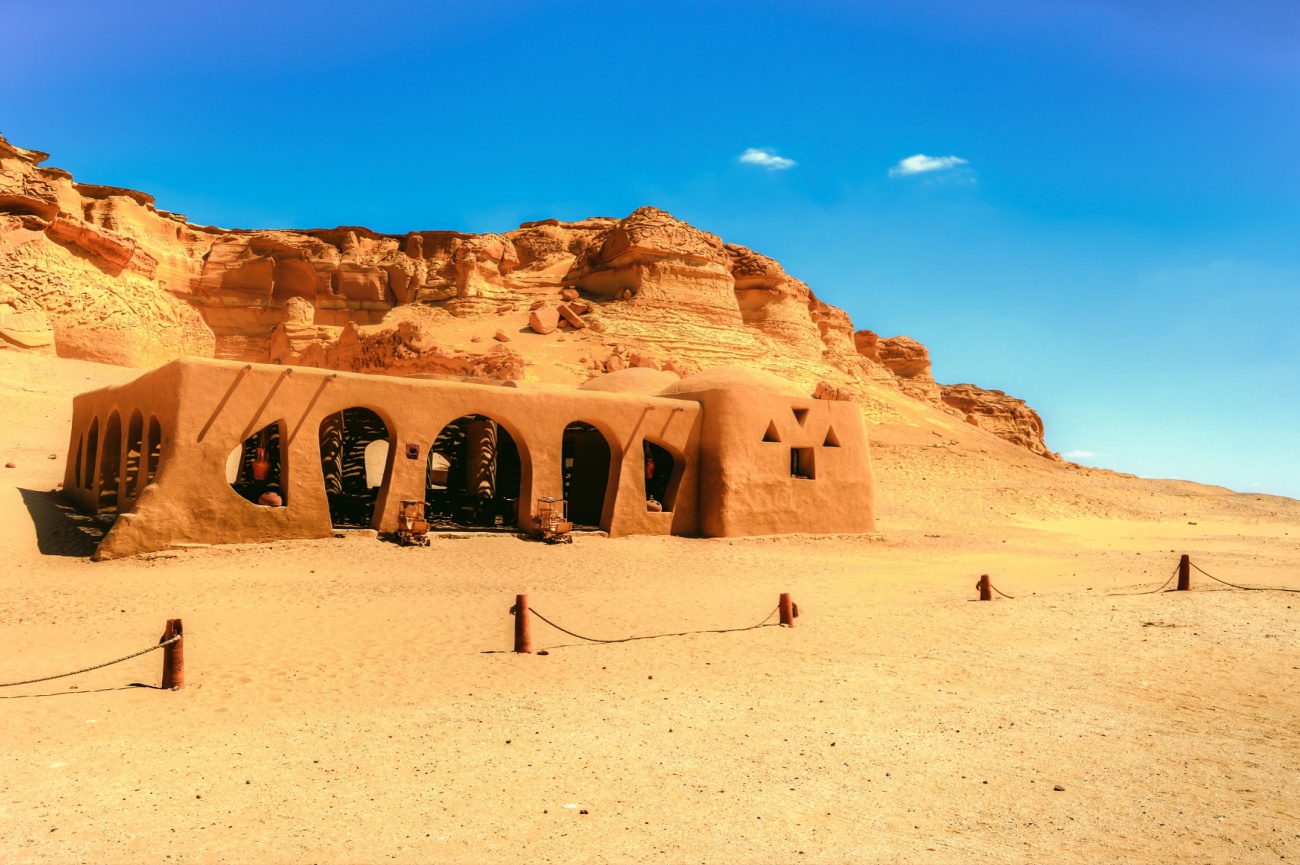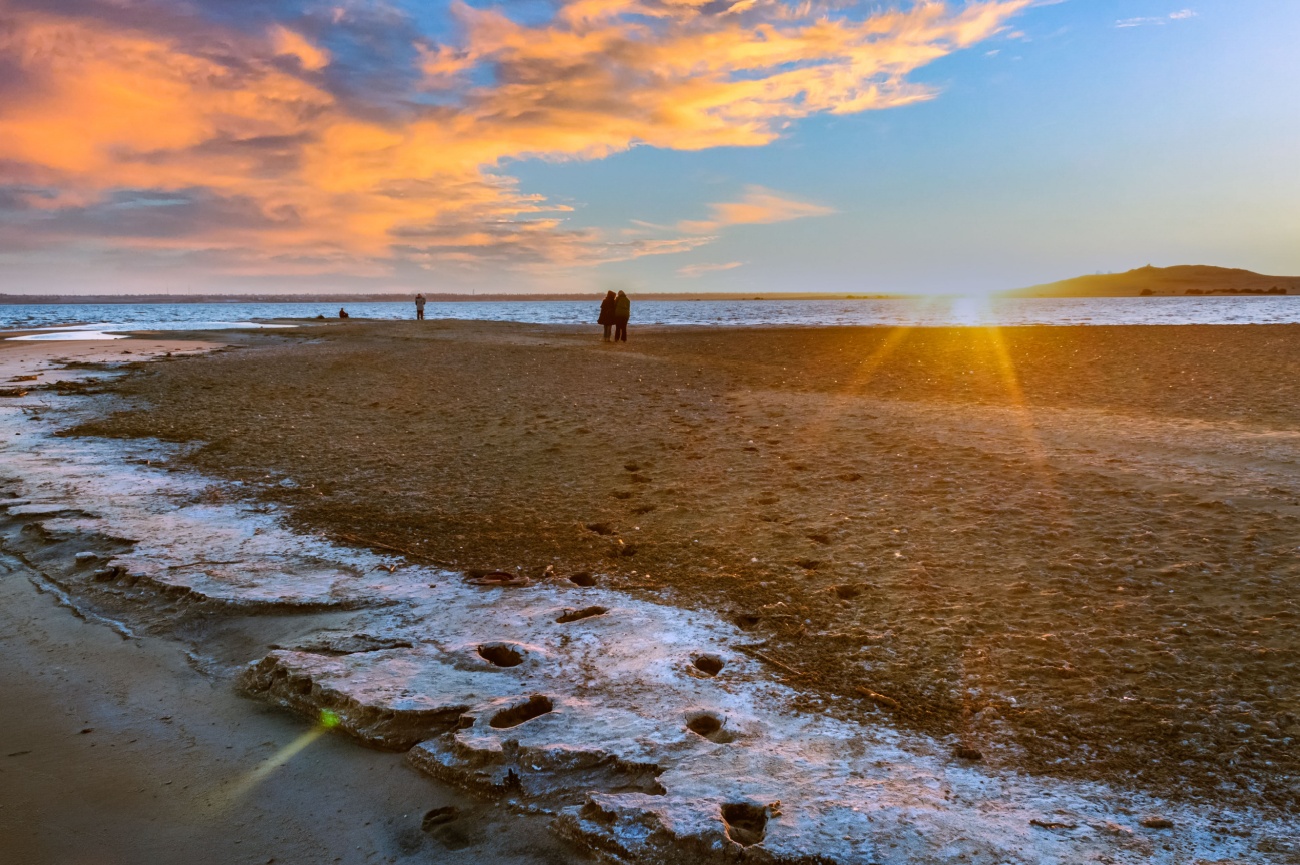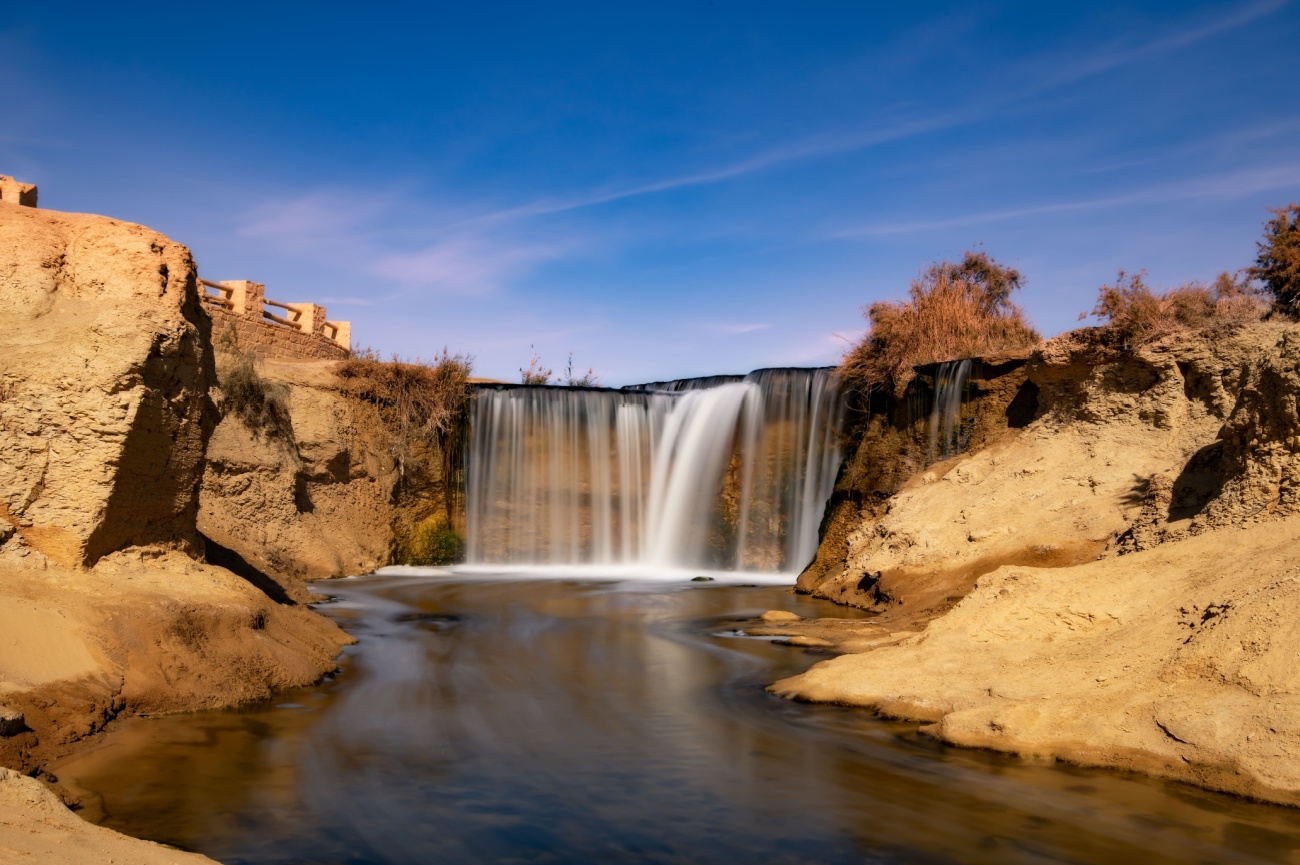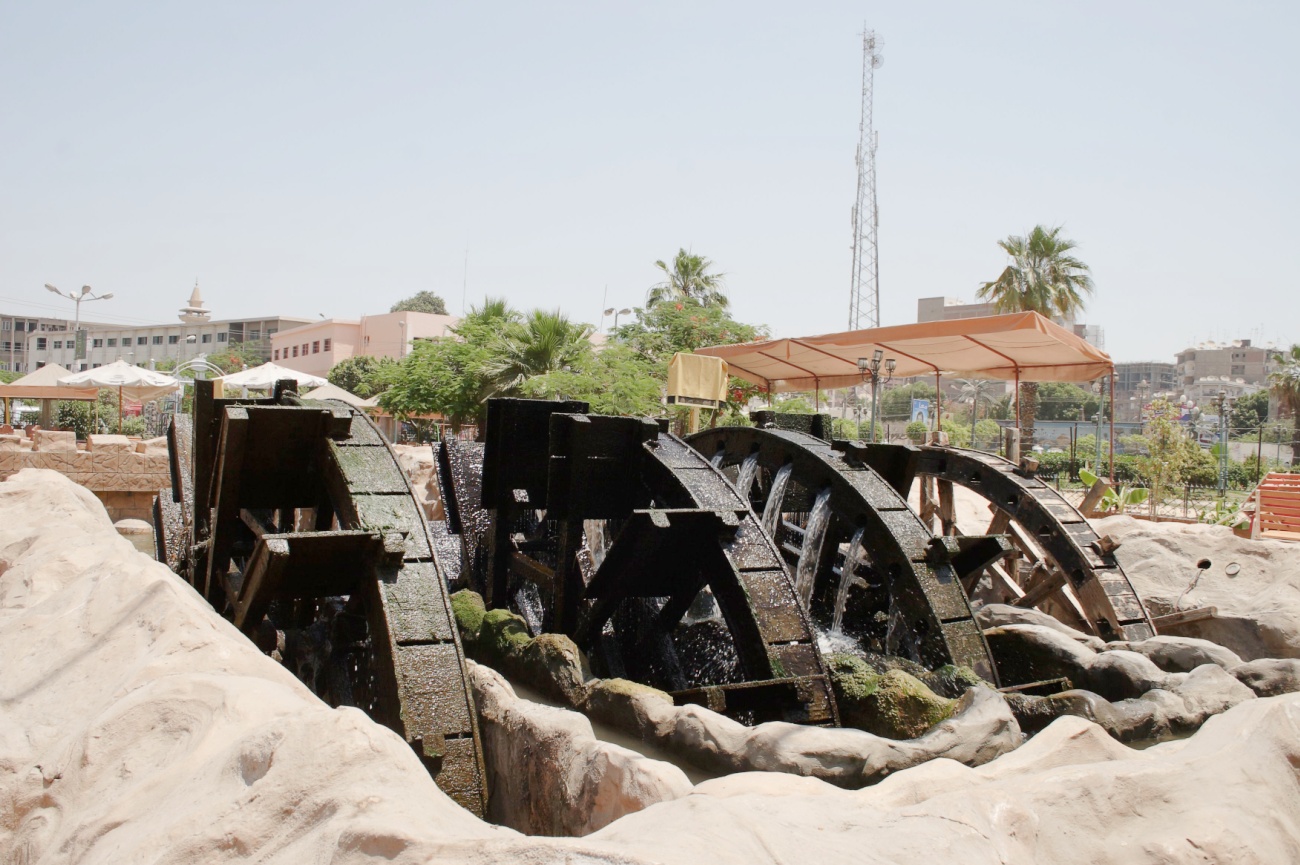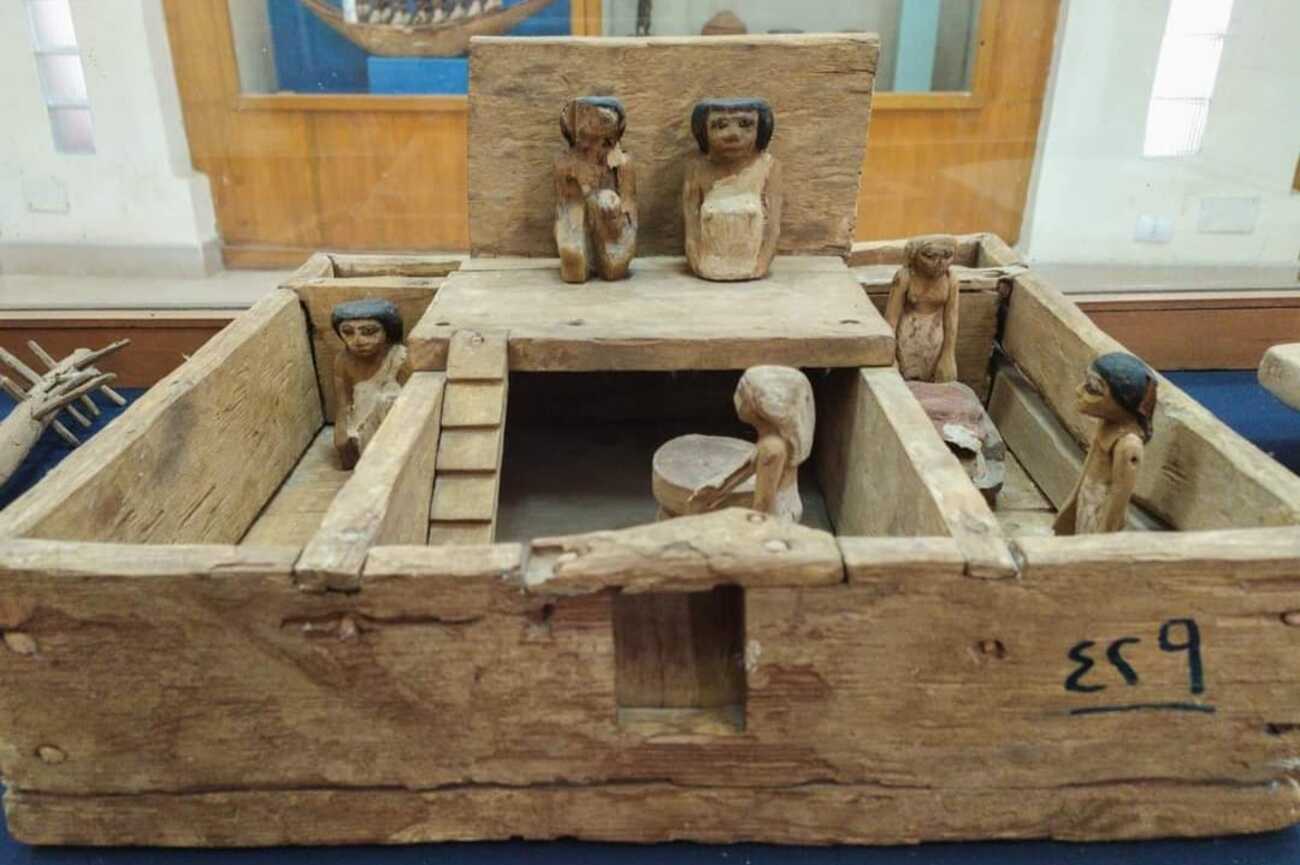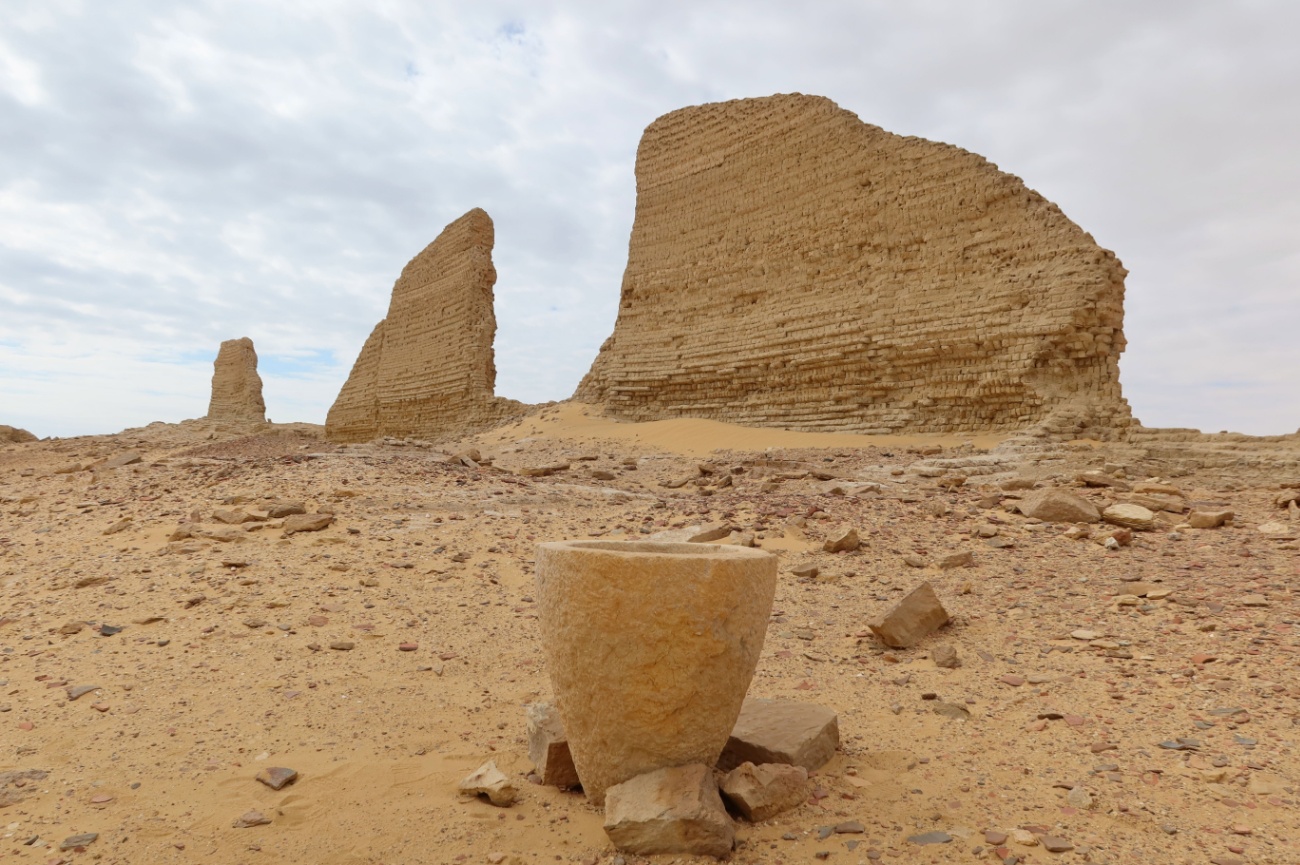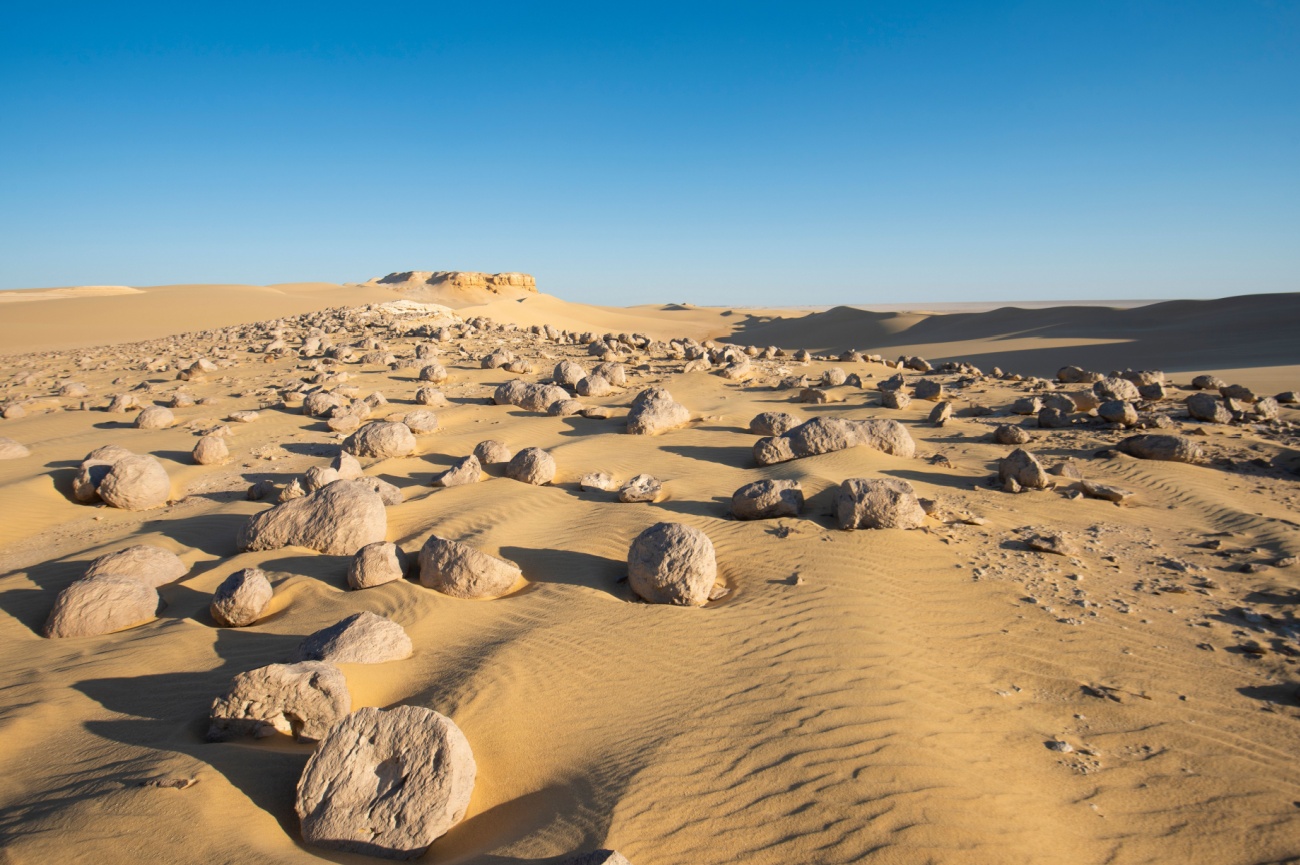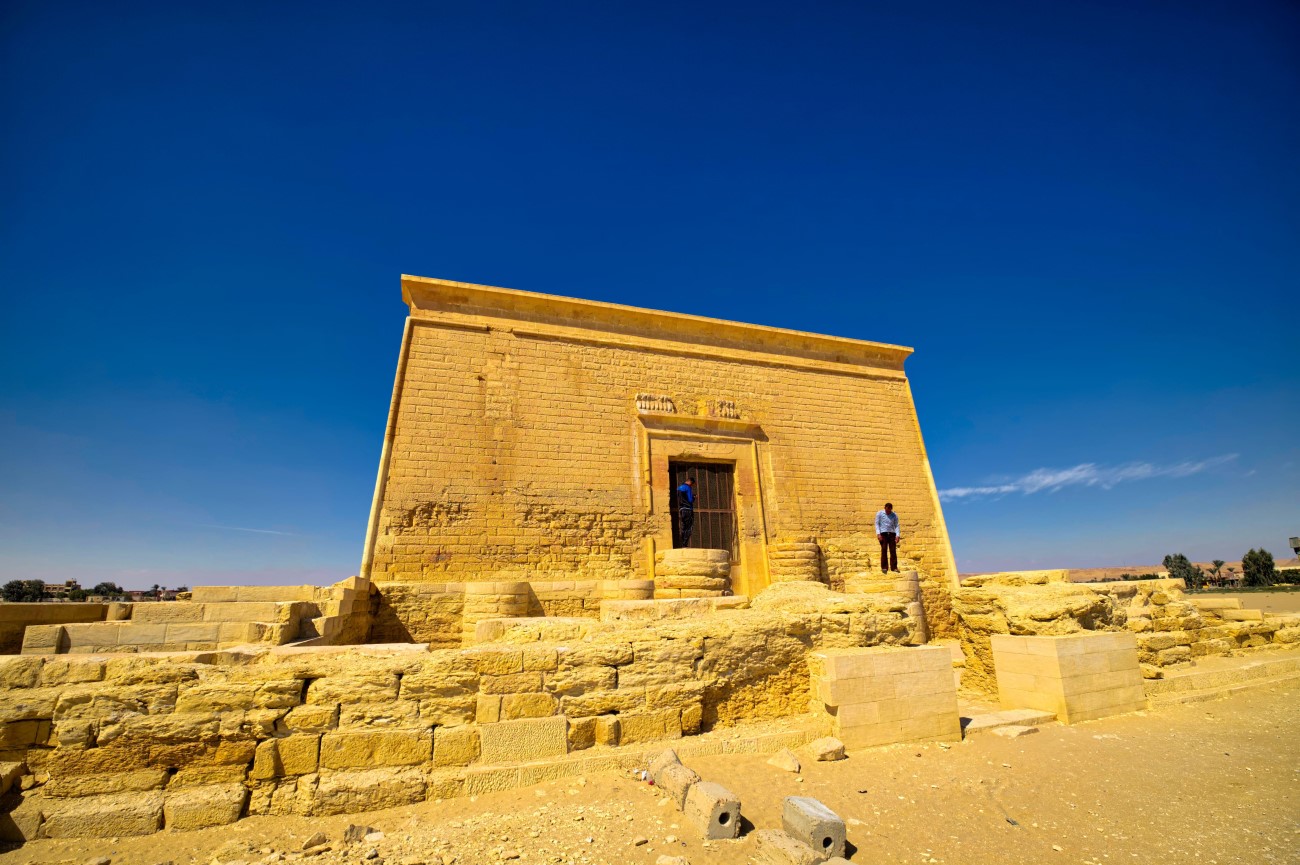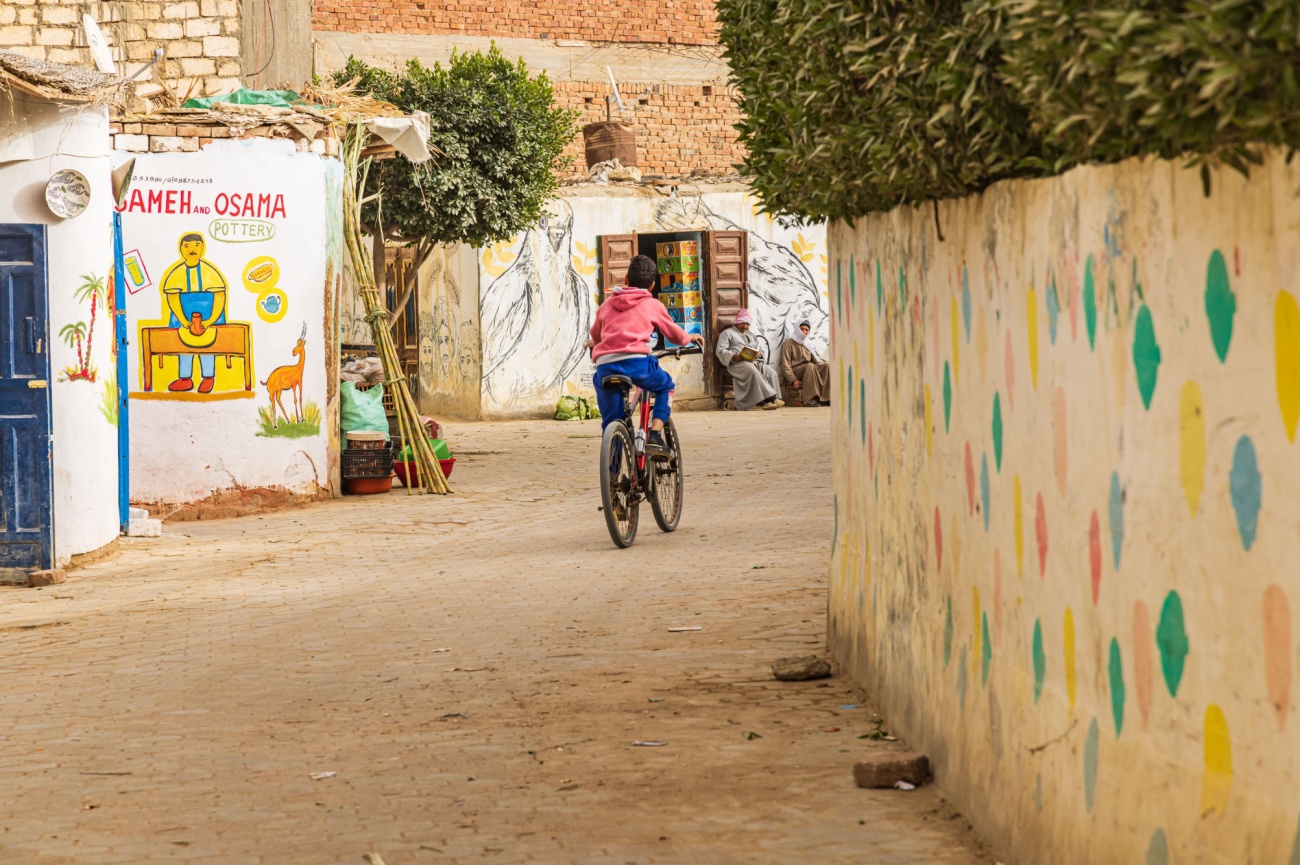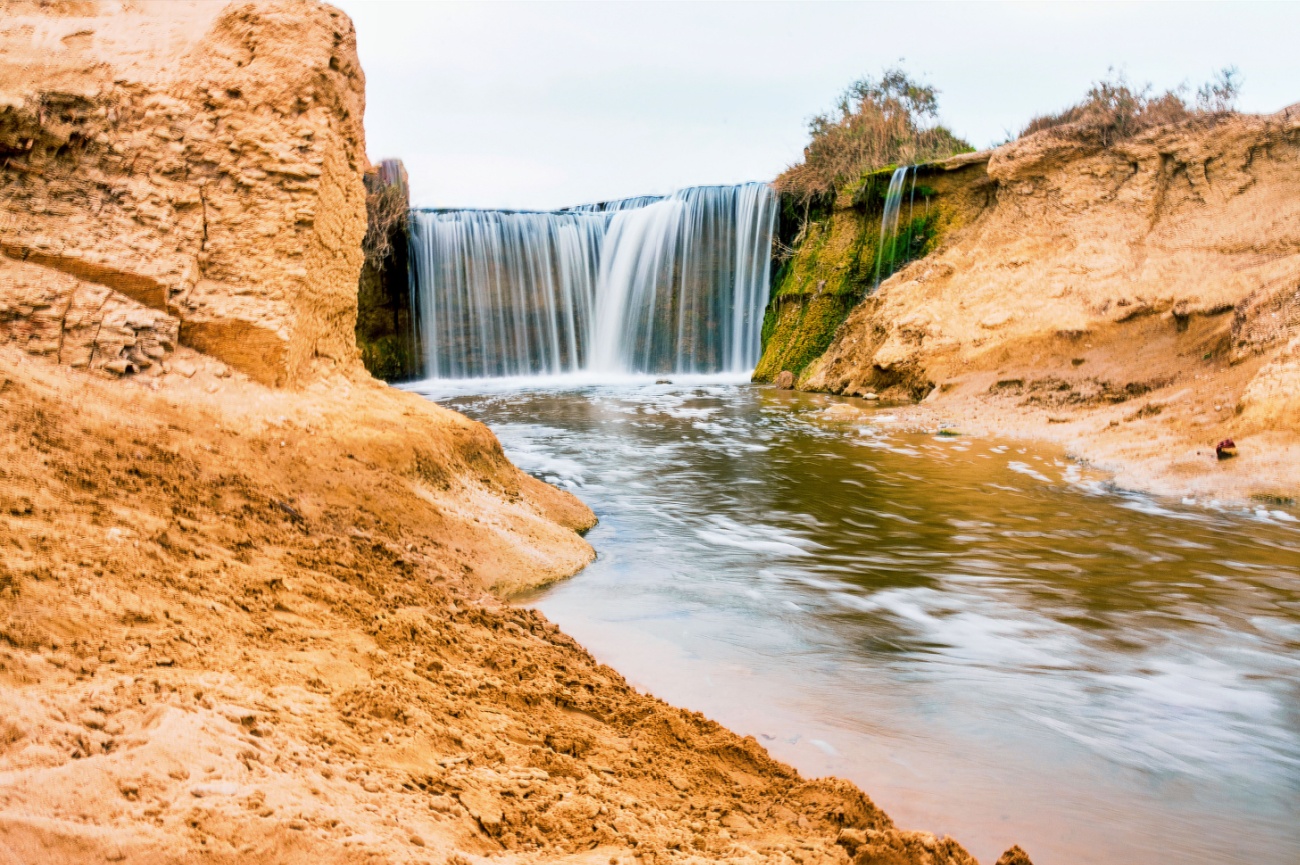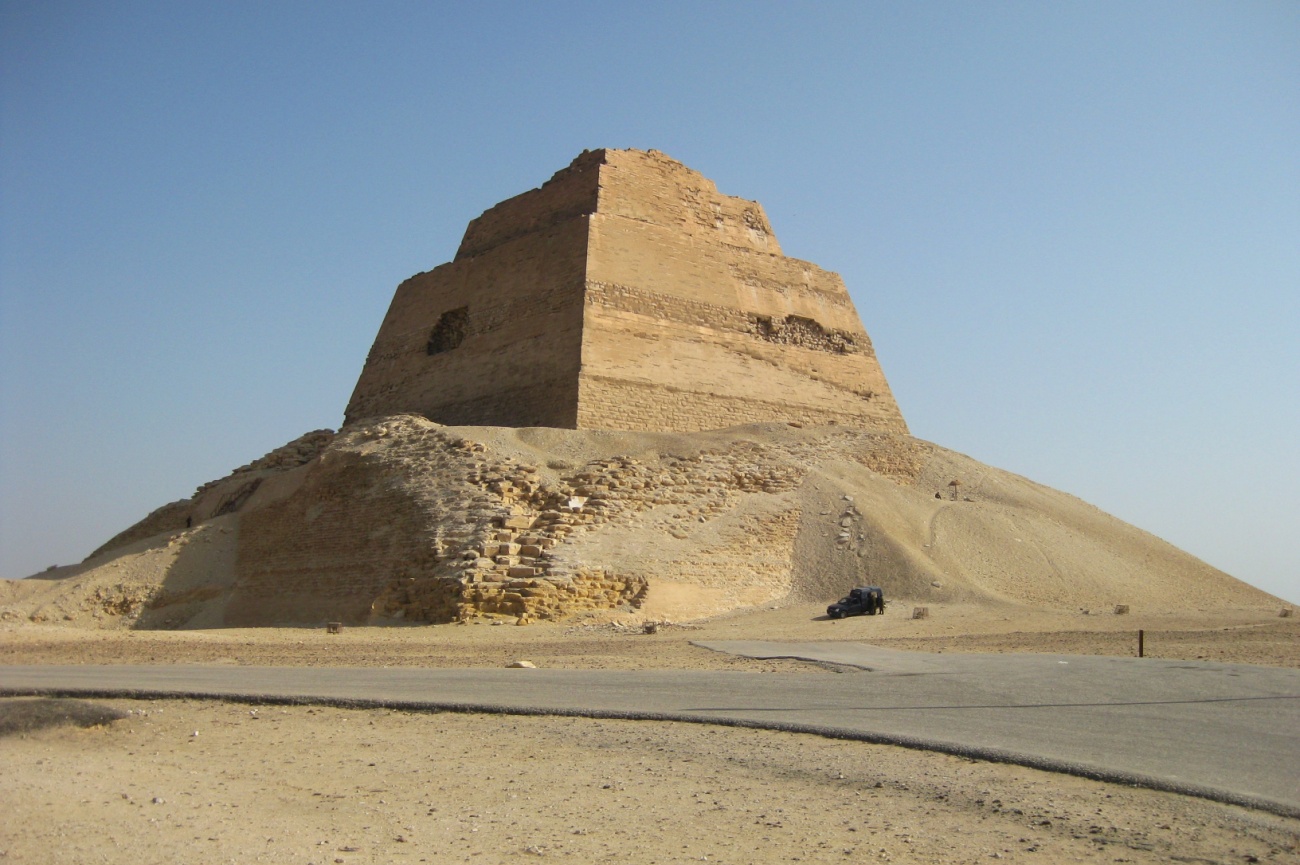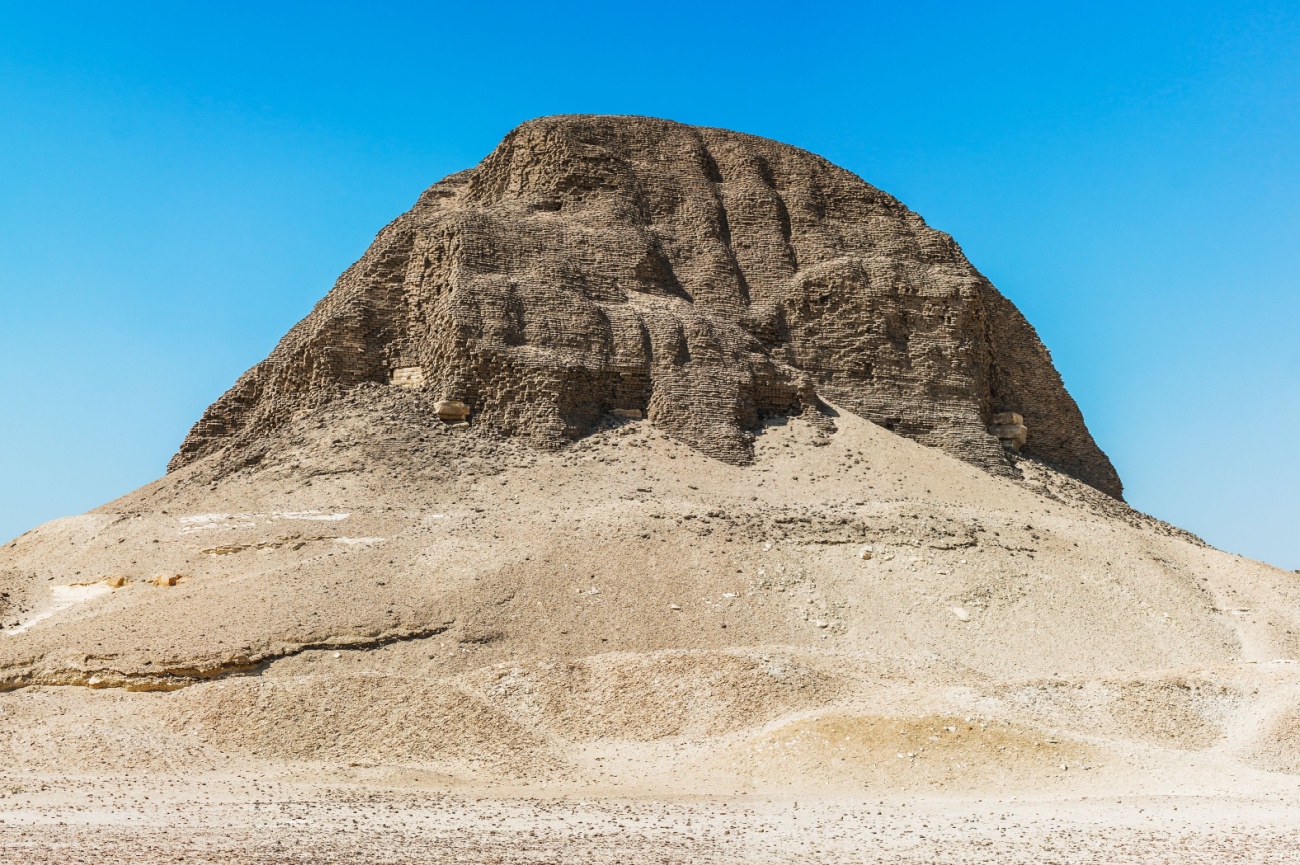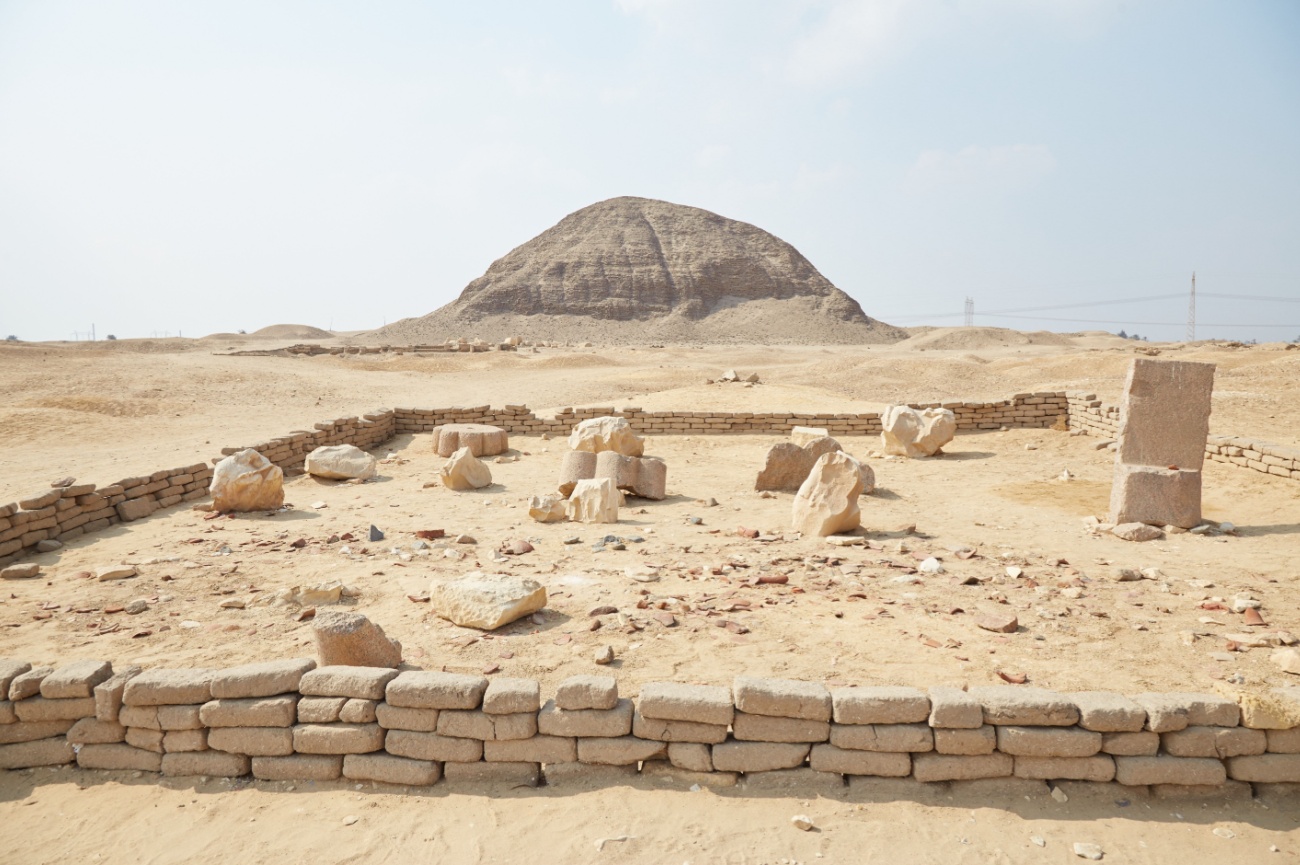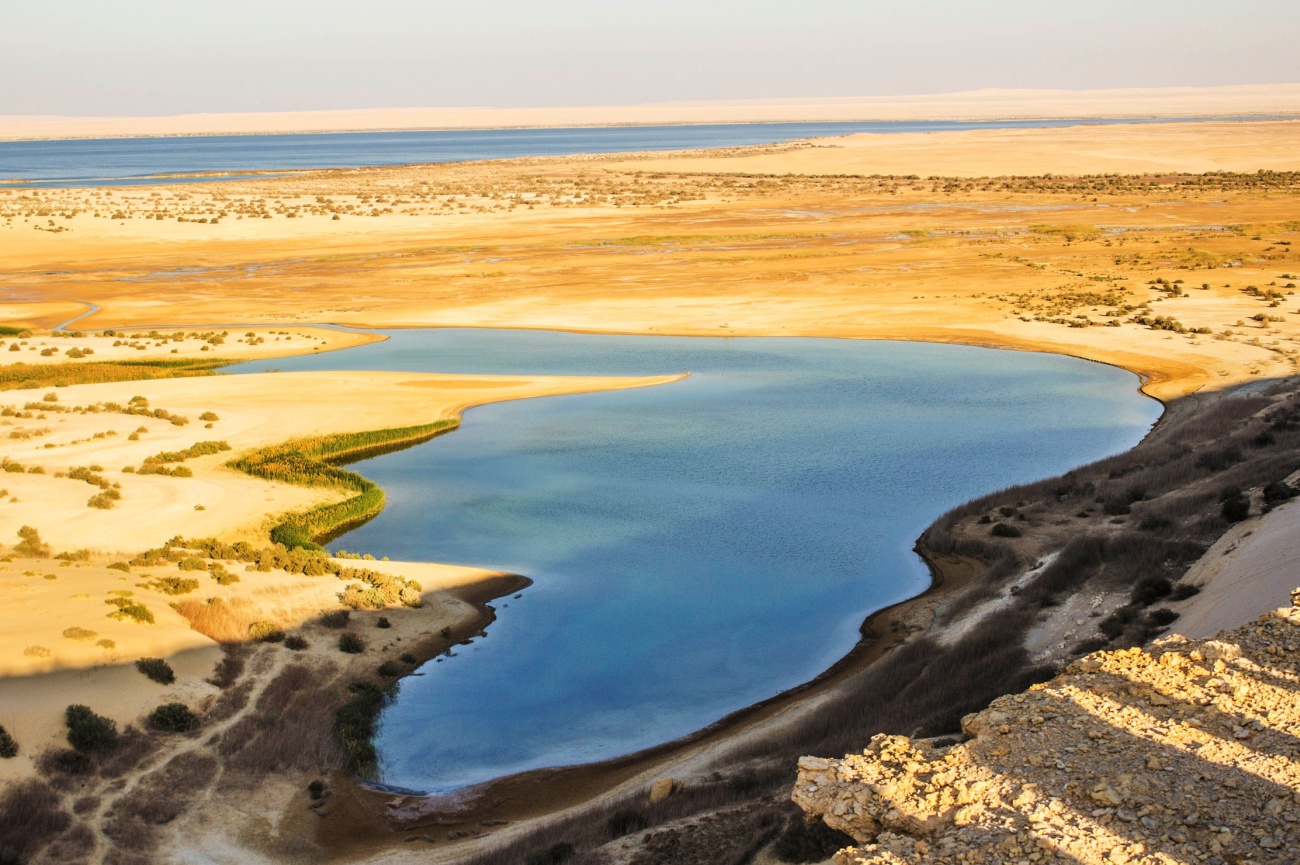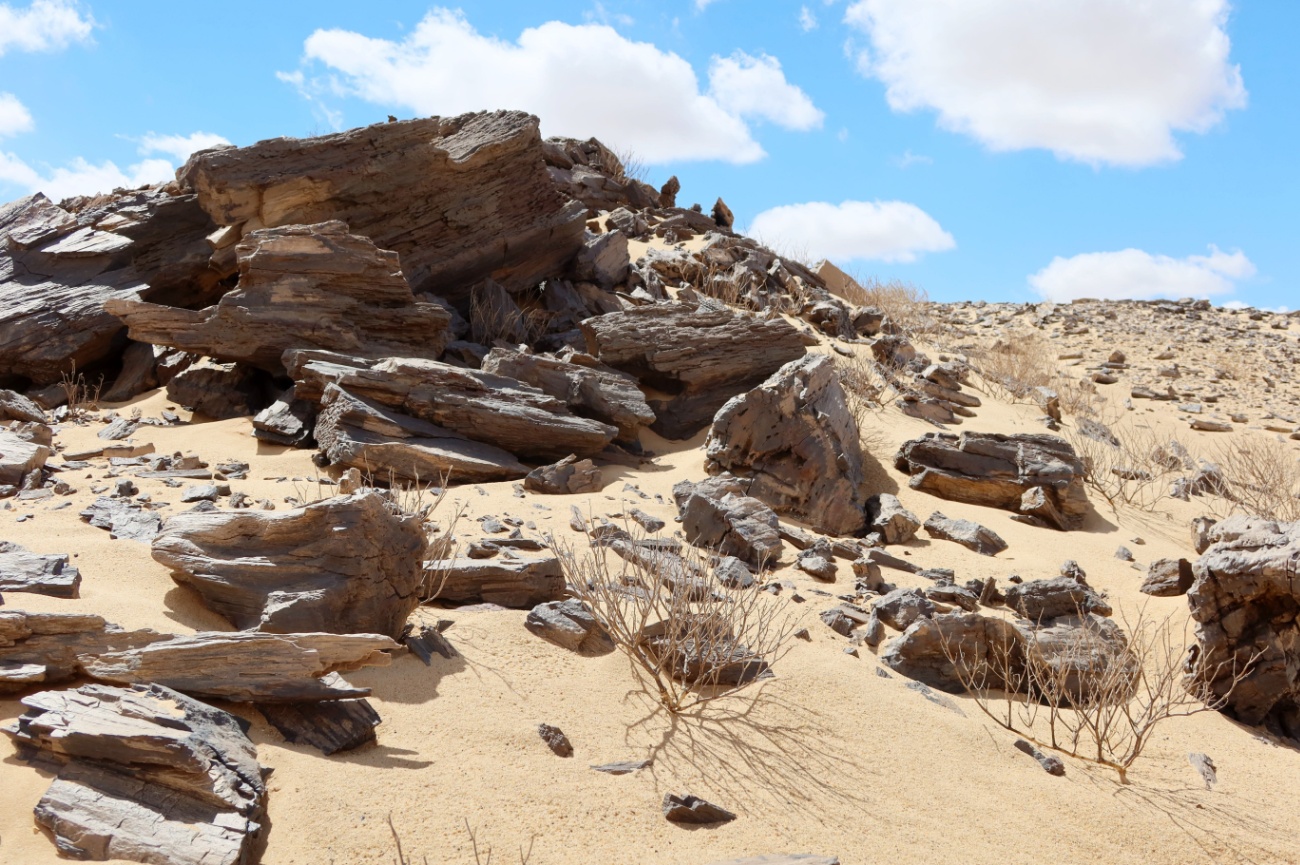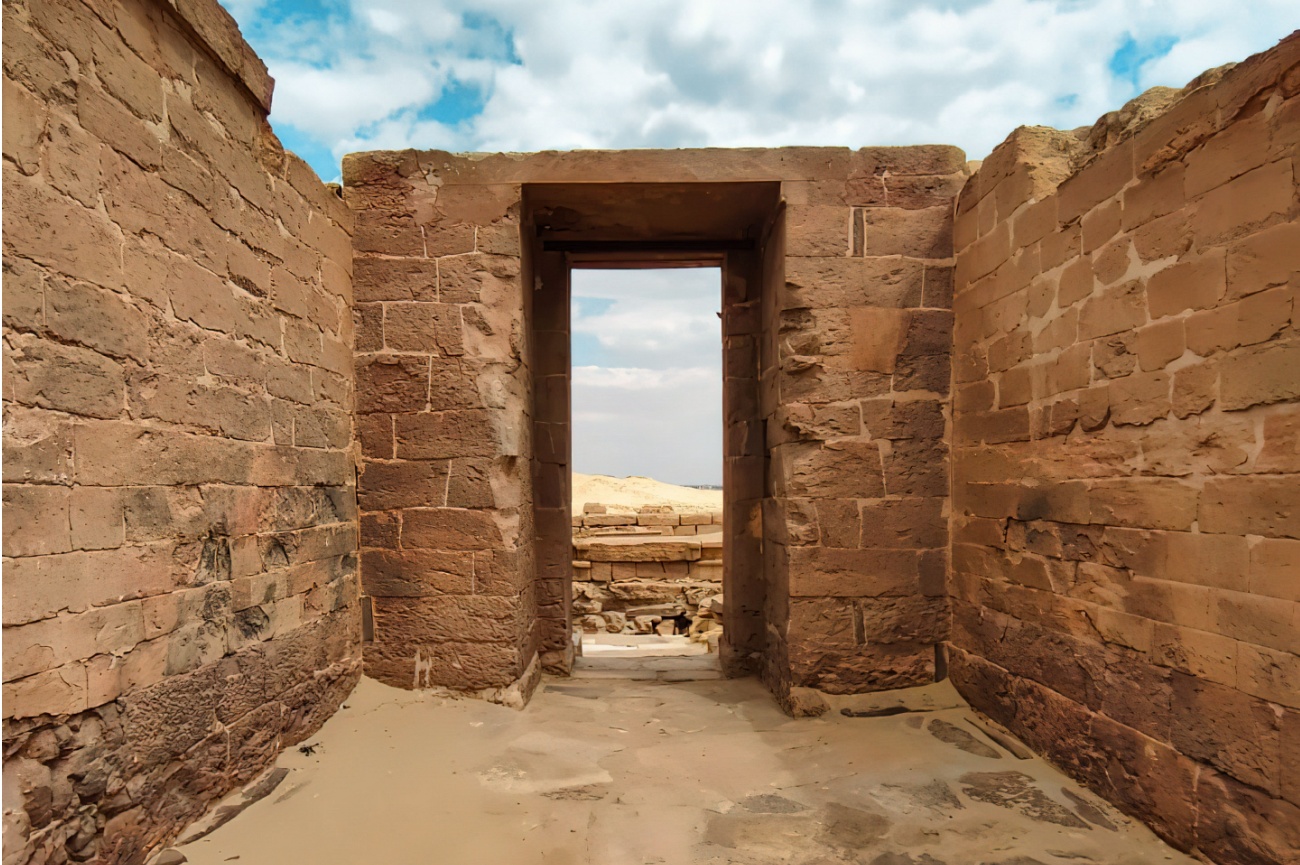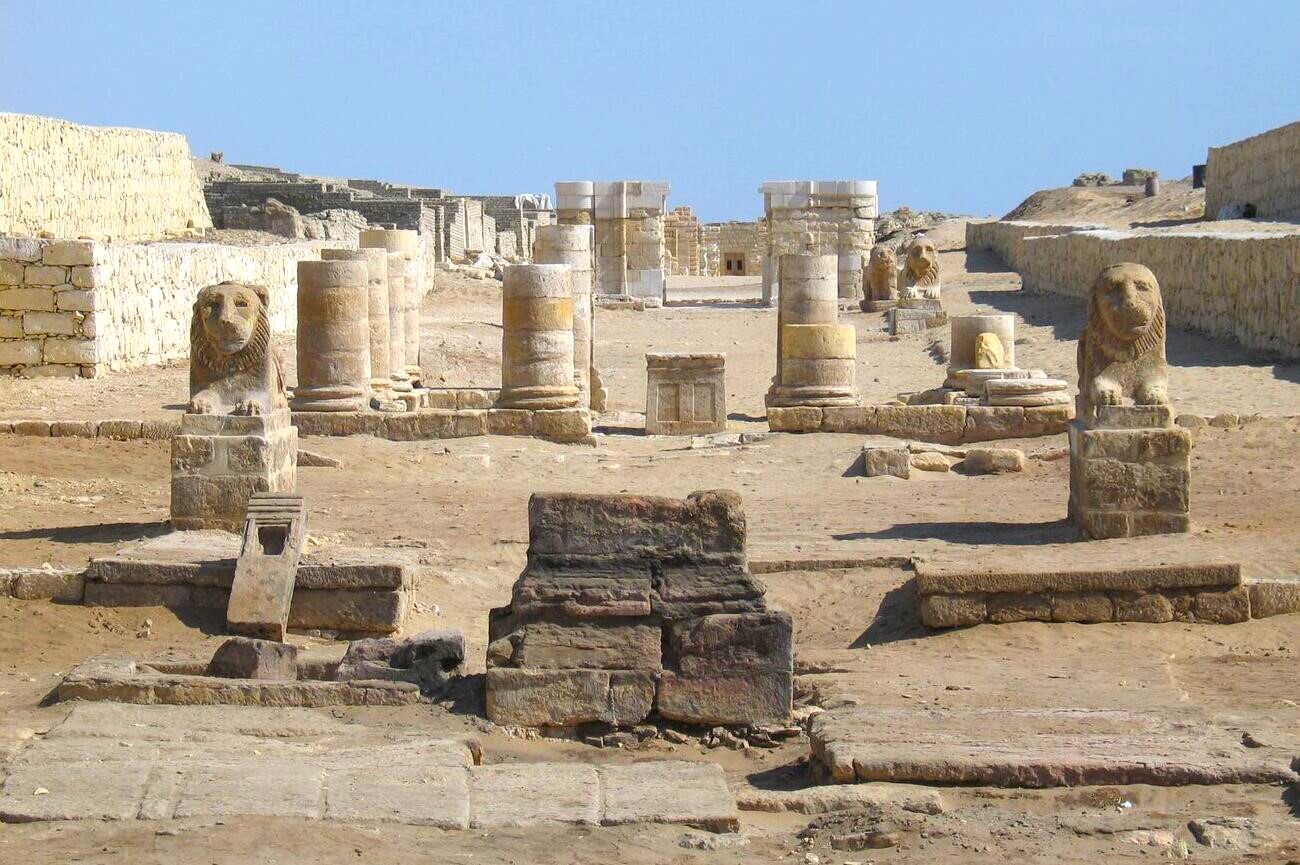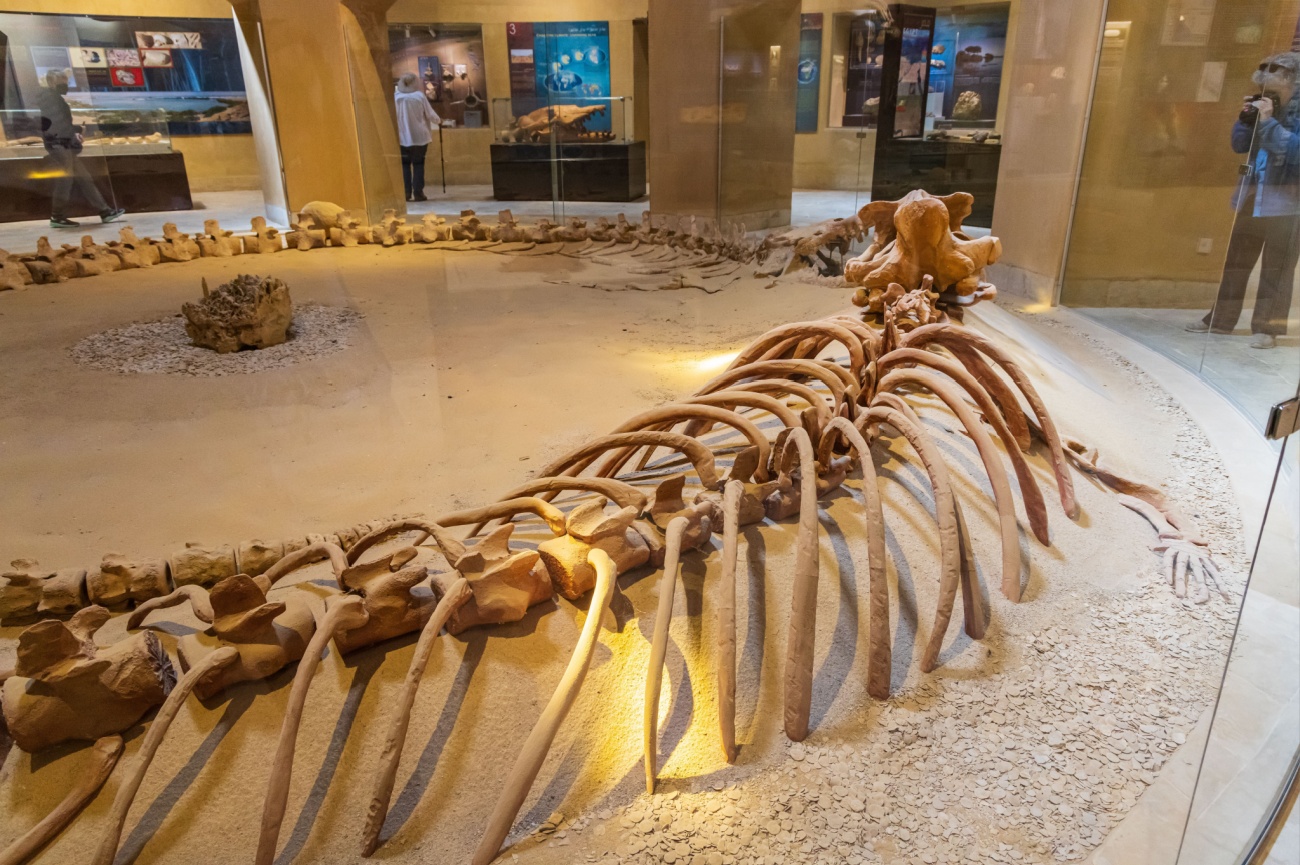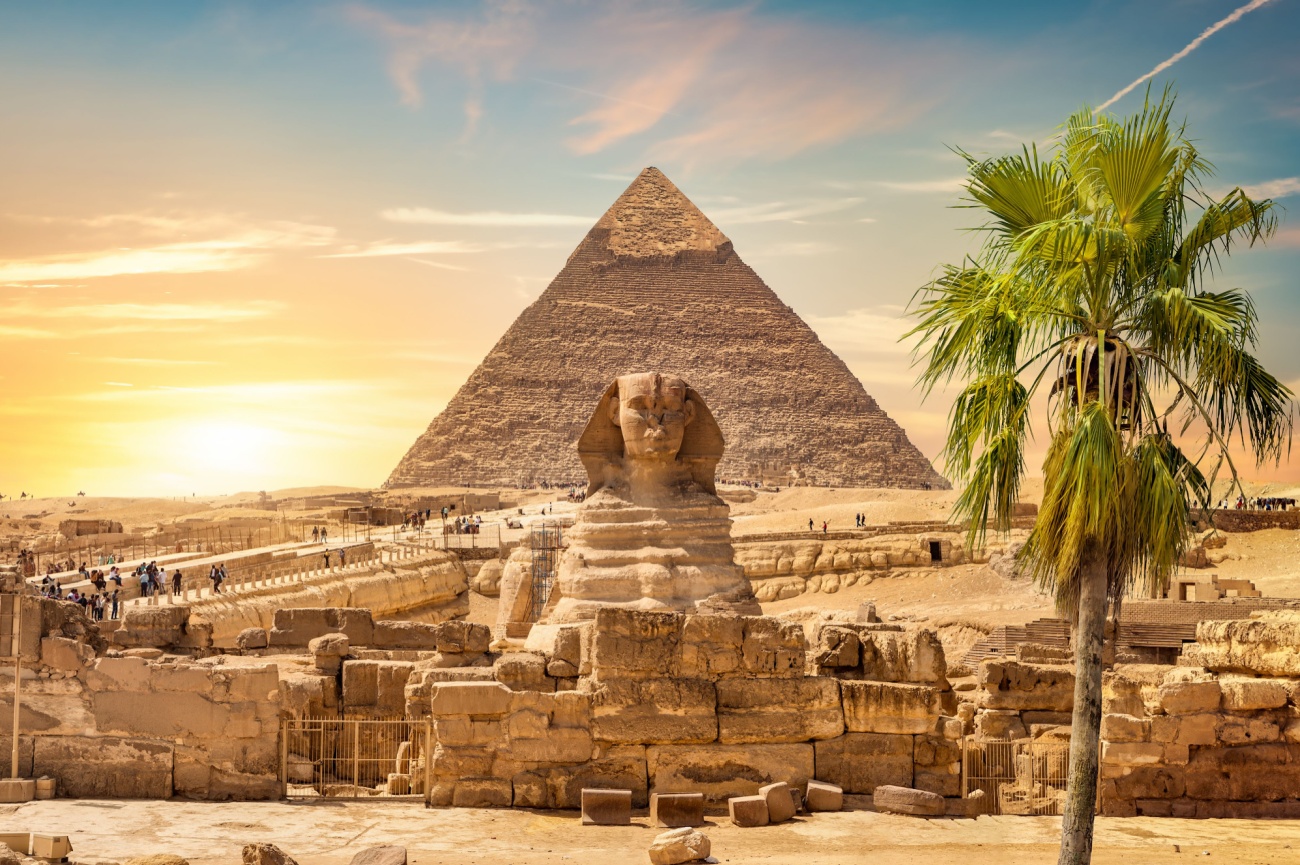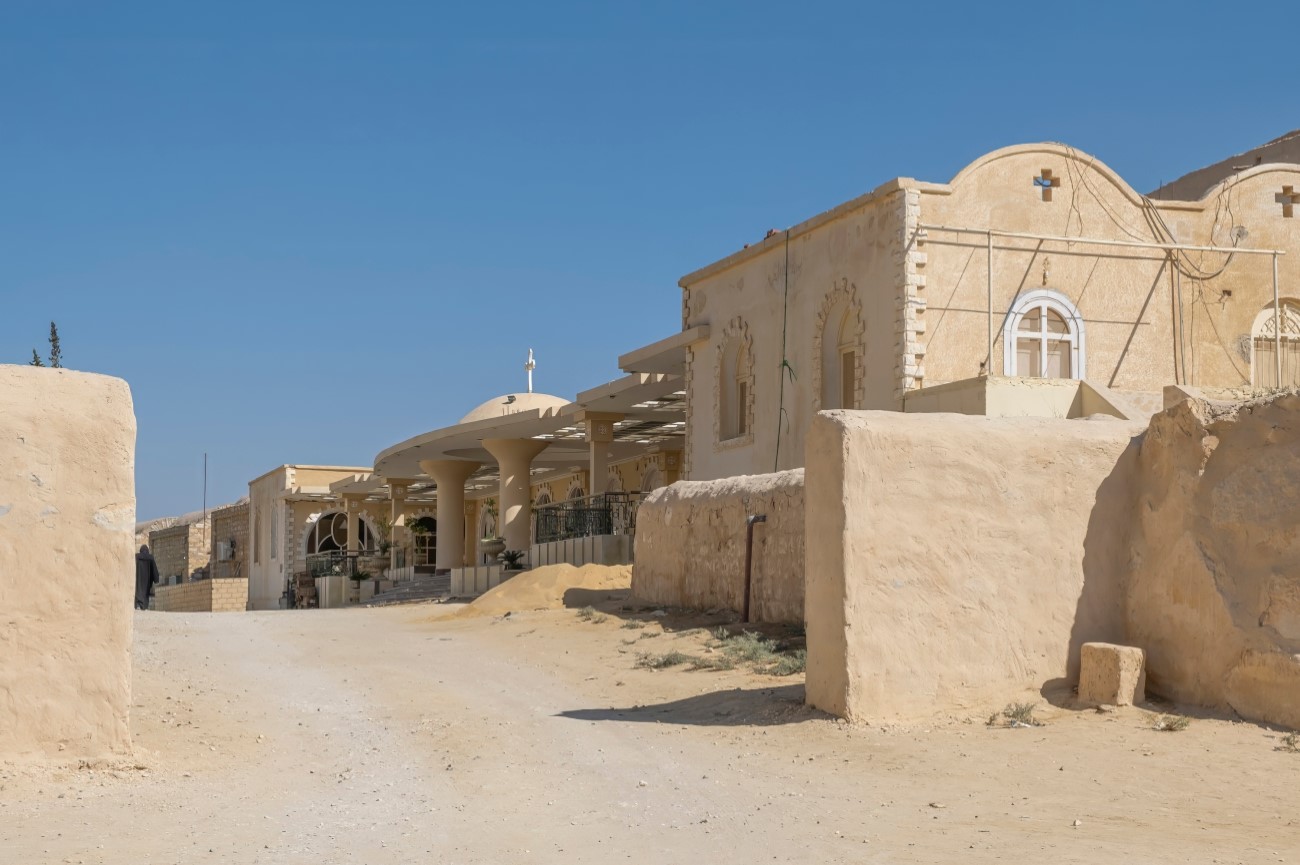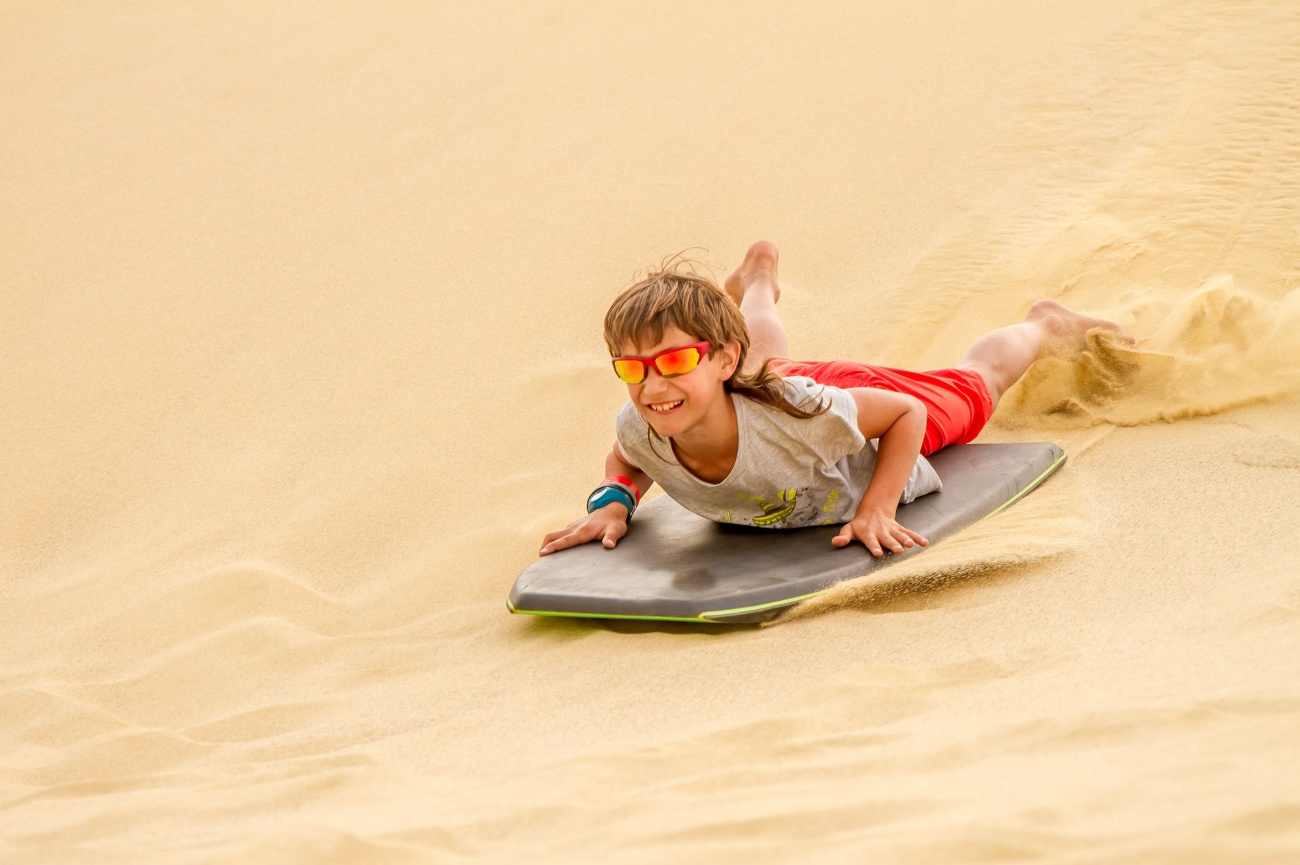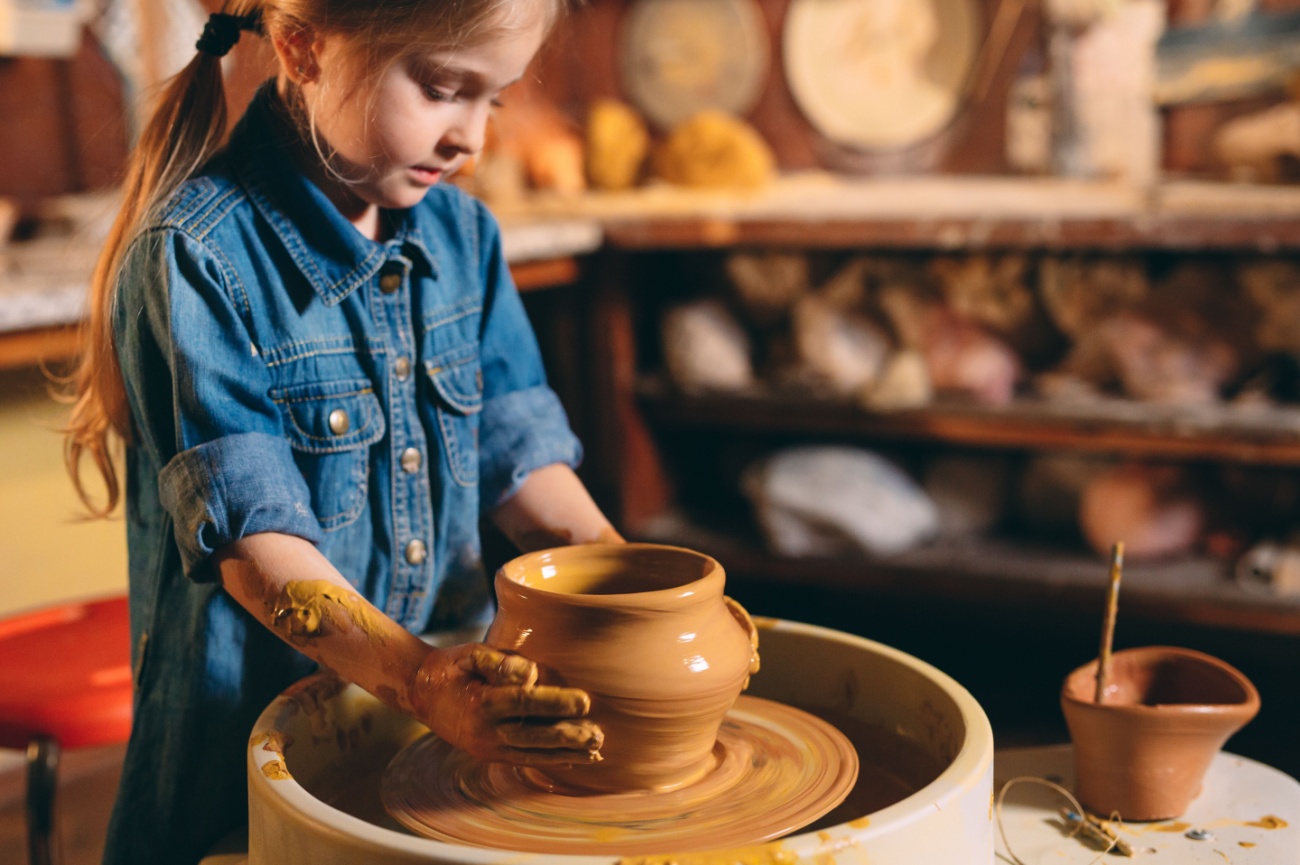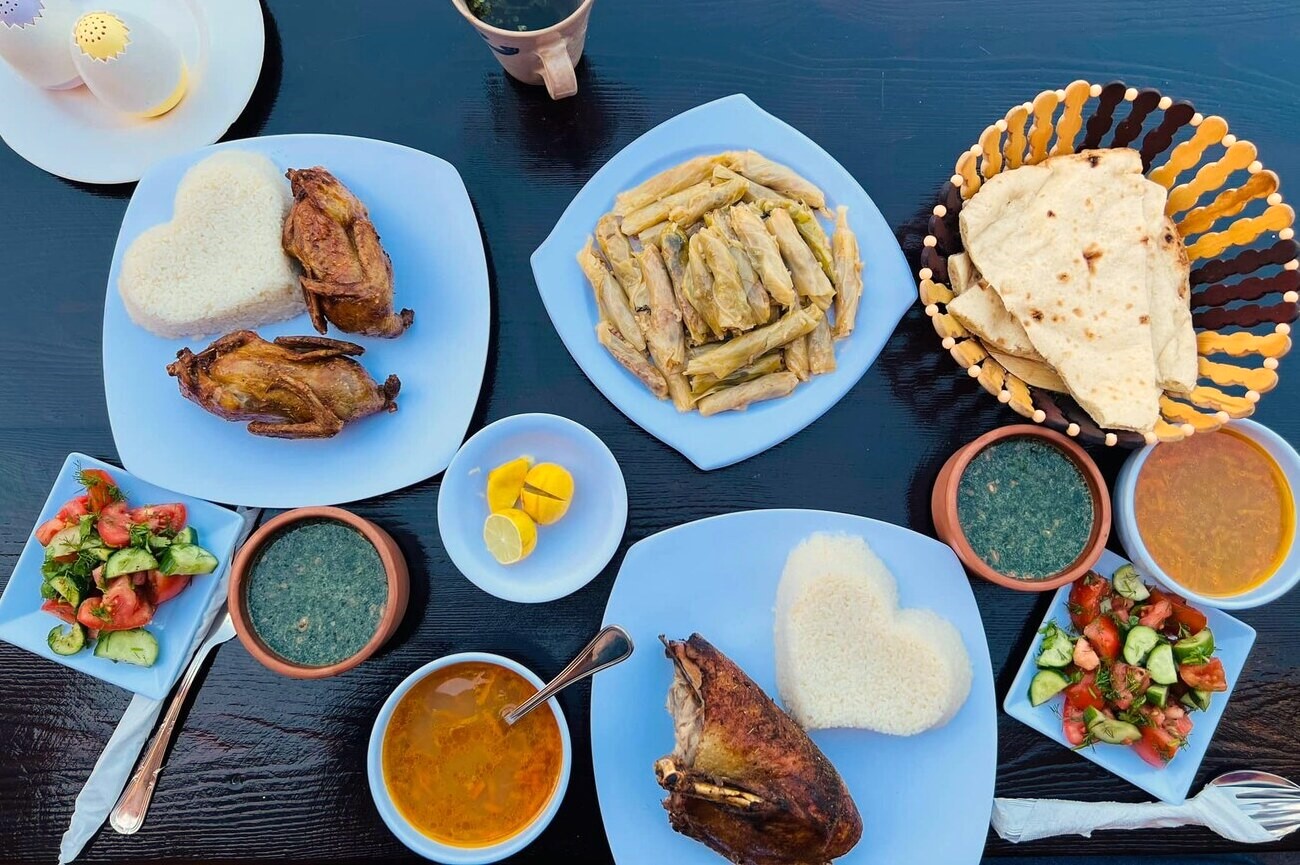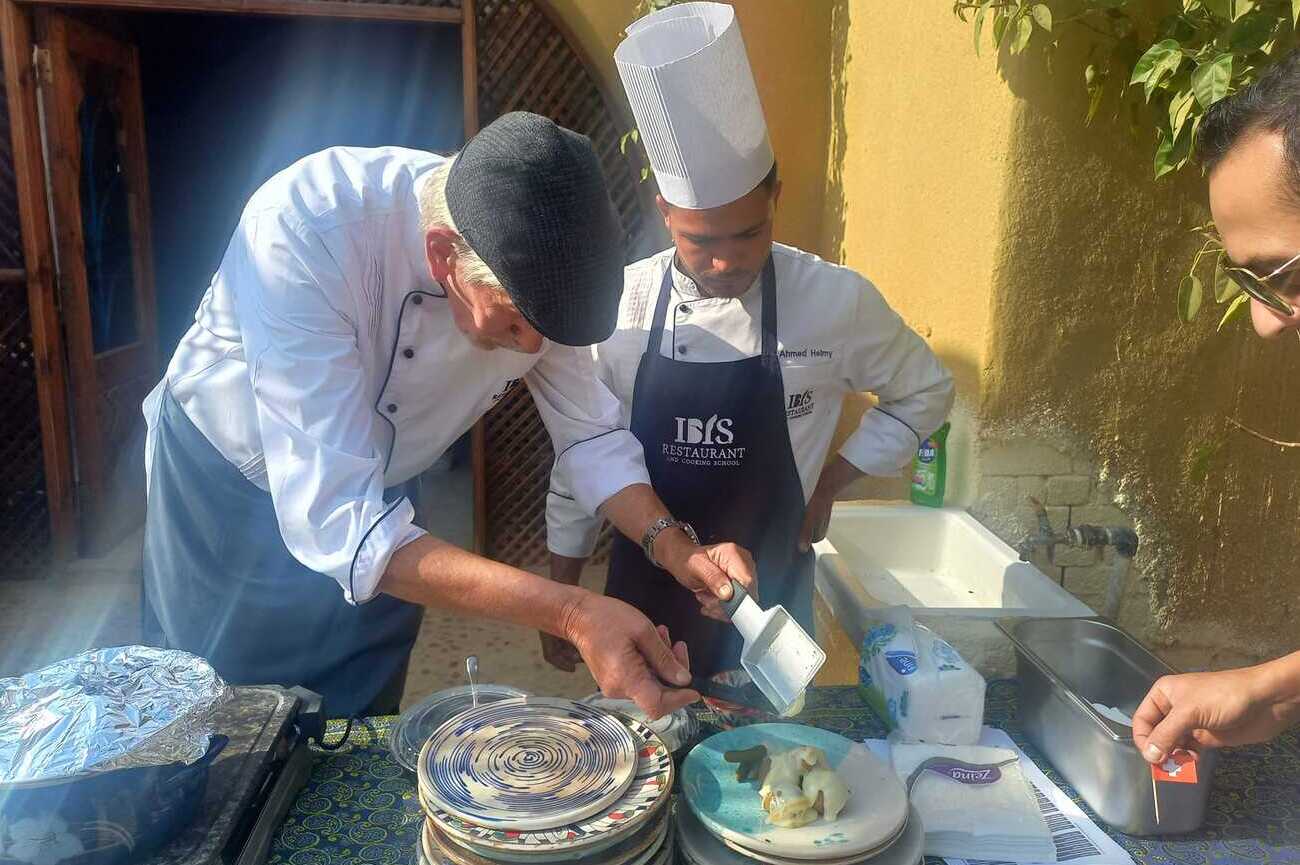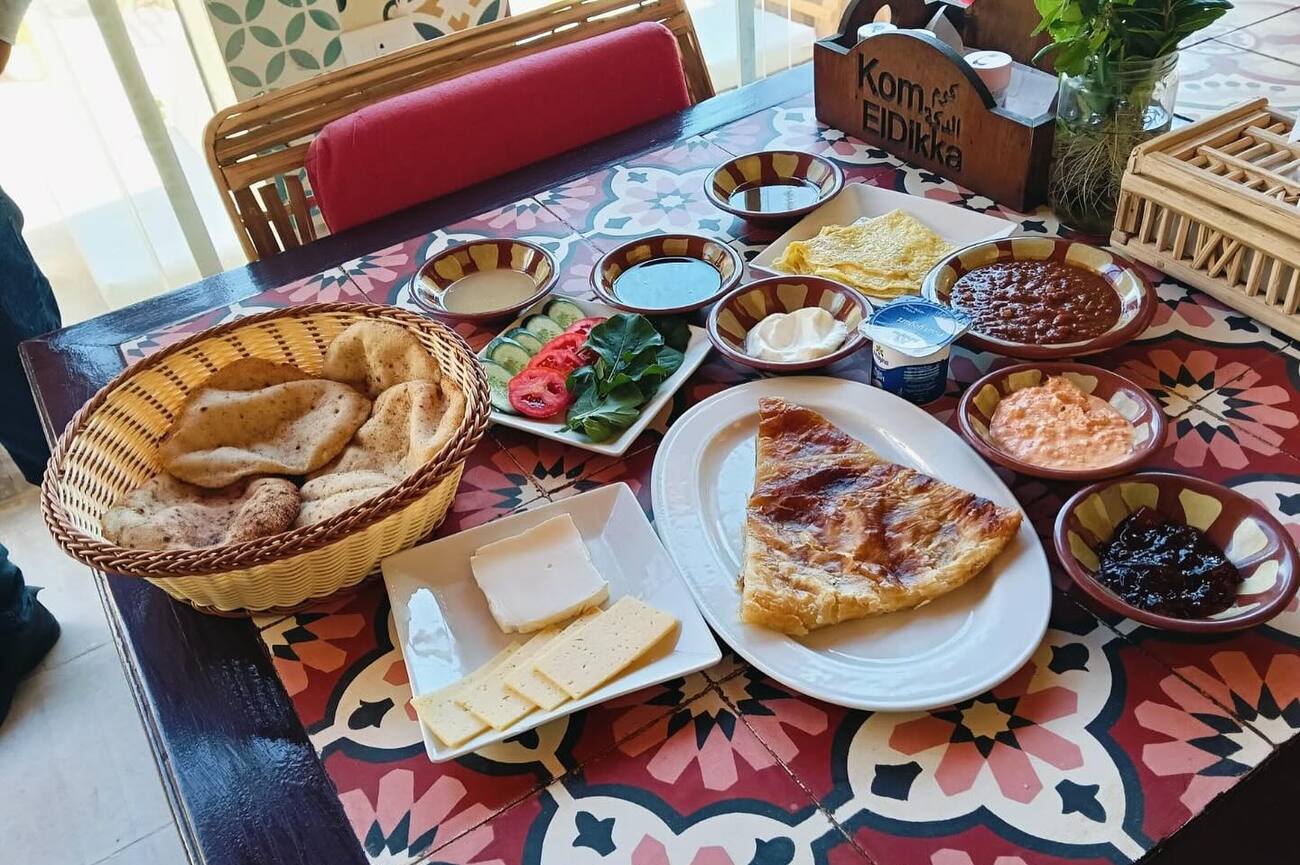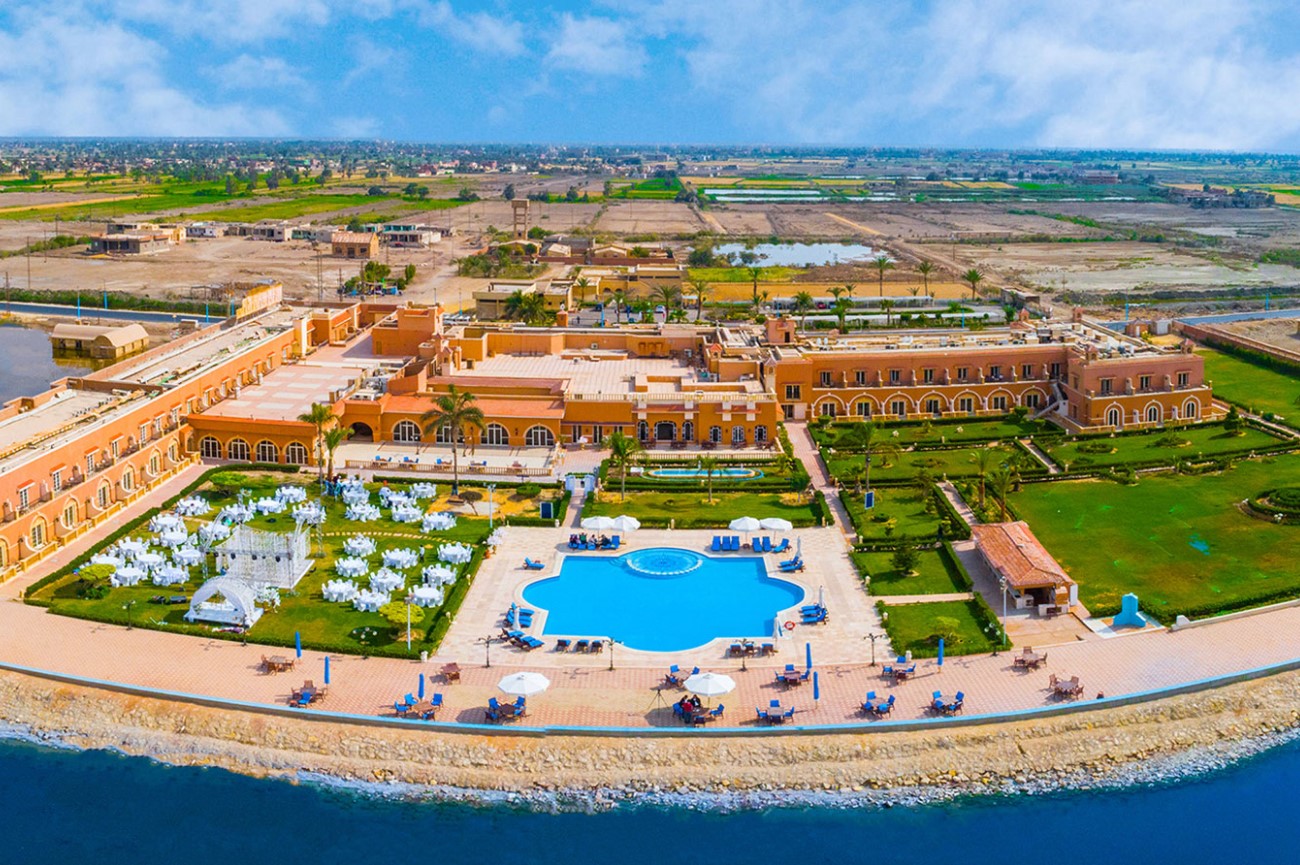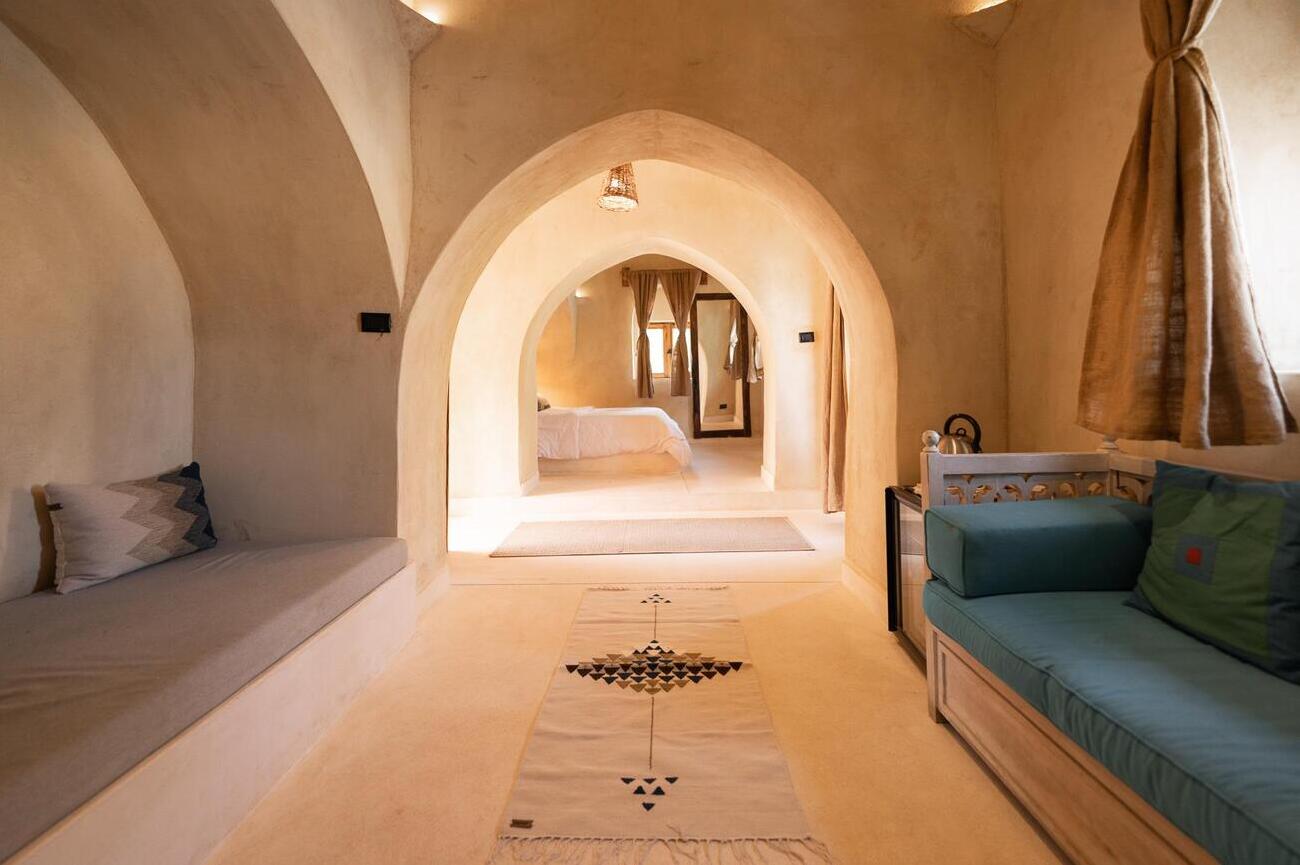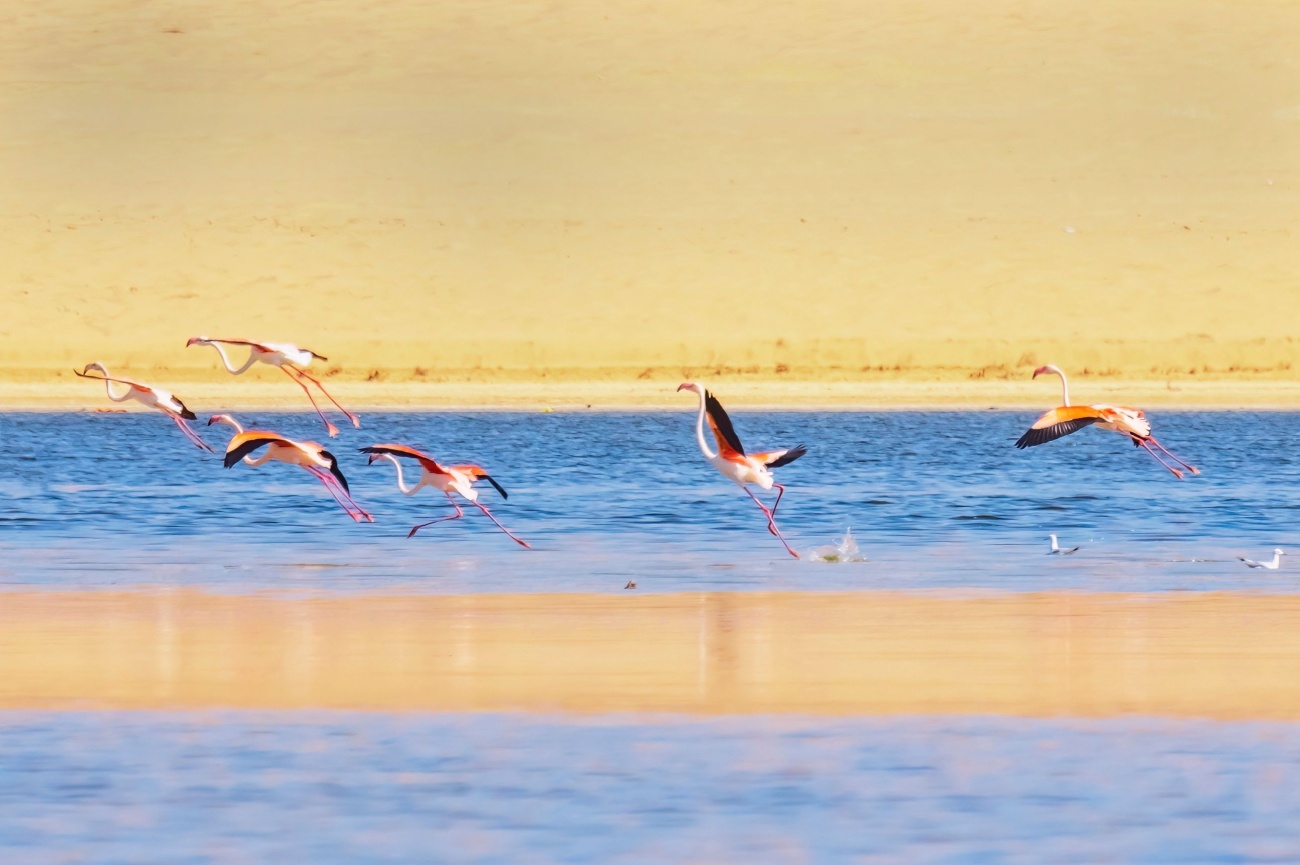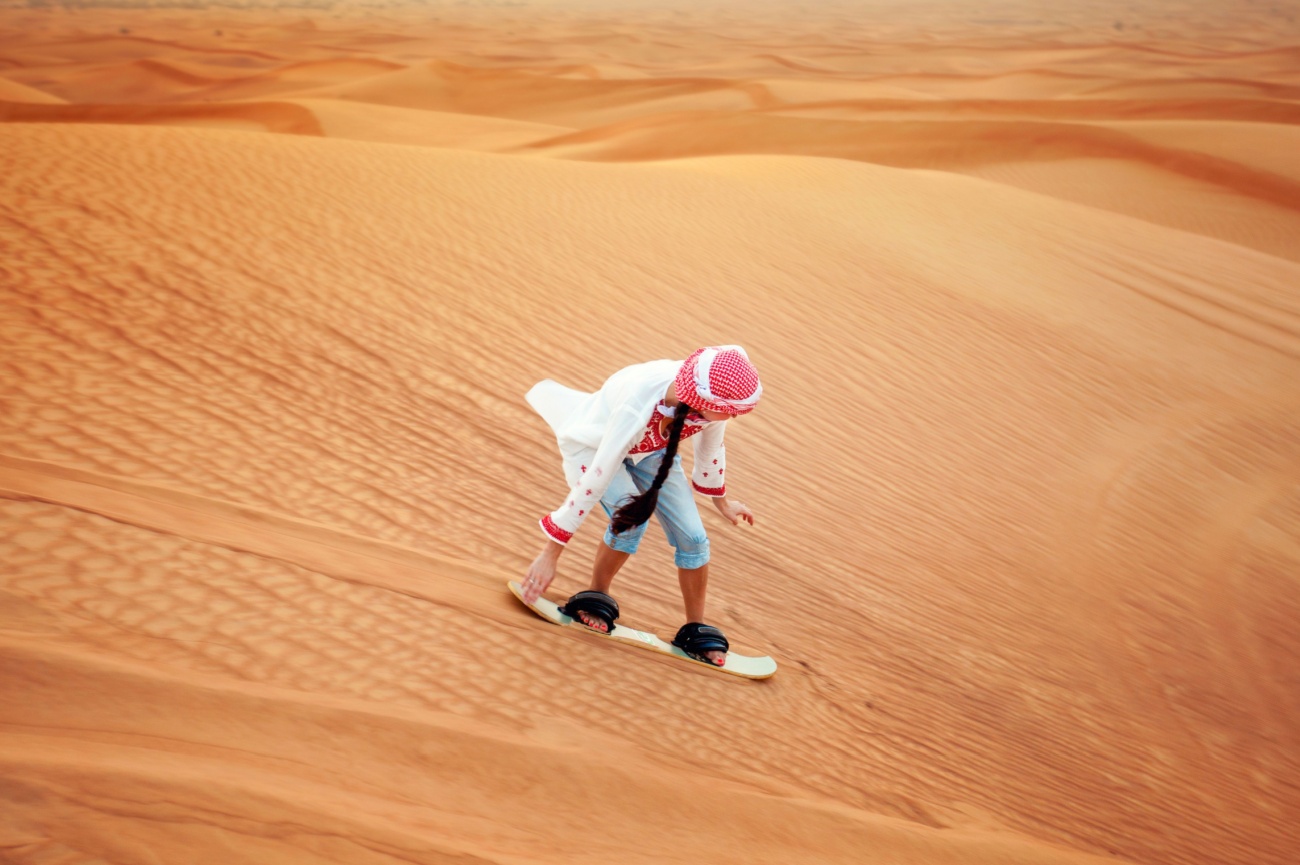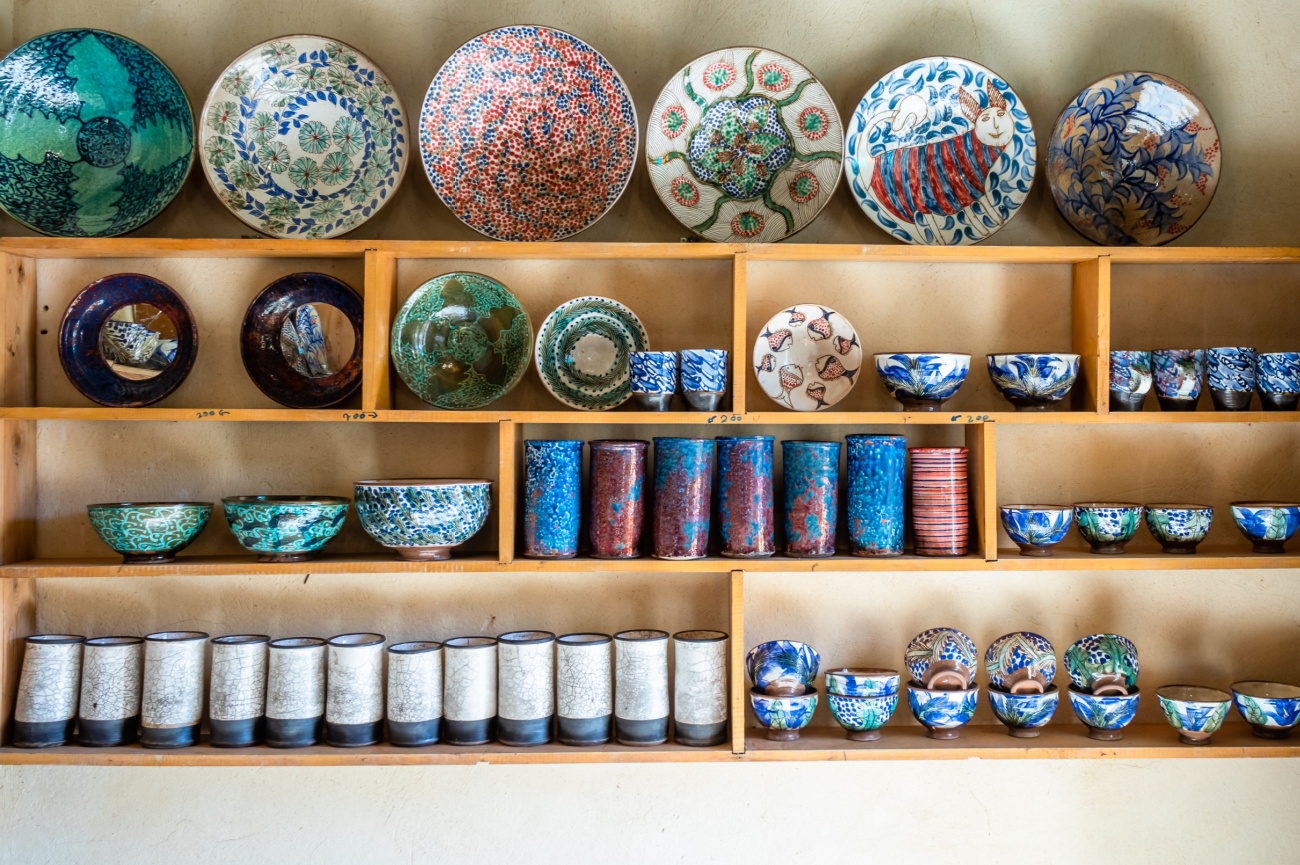Things to Do in Fayoum: 2-Day Itinerary
The closer you get to the largest oasis in Egypt, the quieter it gets. Welcome to Fayoum, a 2,300-square-mile region known for its awe-inspiring archaeological sites, cascading waterfalls, sweeping desert plains, and picturesque lakes. This magical region was formed about 70,000 years ago when the Nile River flooded the entire area.
Whether you wish to explore a valley packed with the fossils of ancient whales, go on a boat ride on Lake Qarun where Kings and Queens spent their vacation days, or learn more about the lively contemporary pottery scene in Tunis Village, a visit to Fayoum is a trip to remember.
To help you make the most out of your stay, we’ve put together this 2-day travel itinerary which includes a list of the best things to do in Fayoum, as well as suggestions on where to stay and where to eat. You will also find a few cool ideas for day trips from Fayoum. We wish to point out that the best way to explore the Fayoum Oasis is by car, as most tourist attractions are far away from each other.
Day 1

Morning: The Waterwheels in Fayoum
This travel itinerary starts in downtown Fayoum where you will find the town’s famous waterwheels. Made of white wood, these waterwheels were introduced back in the third century B.C. to provide fresh water to the region. You will come across a few of these majestic waterwheels in the center of Fayoum. To see the largest one, visit the nearby village of Basiouniya.
Kom
Aushim Museum
Located on the outskirts of the ancient city of Karanis, this recently renovated museum houses a diverse collection of archaeological remains that represent different eras of the history in the Fayoum Oasis. Visitors will find statues, artifacts, and other antiques from the Greco-Roman, Islamic, and Coptic eras. The main attraction here is the mummy portraits painted on wood or linen. The small museum is spread across 2 levels and it will take you about 45 minutes to explore it.
Soknopaiou Nesos (Dimeh es-Seba)
You are standing in front of an archaeological site in the middle of the desert. Also known as Dimeh es-Seba, Soknopaiou Nesos was a Ptolemaic village and a religious epicenter. Nowadays, you can see the remains of administrative buildings, houses built for priests, temples, underground chambers, and workshops. The main temple complex constructed predominantly from mud bricks in the north-western corner is the most striking archaeological feature. To learn everything there is to know about Dimeh es-Seba, we definitely recommend hiring a local guide when visiting the site.
Qasr Sagha Temple
Nestled in the desert north of Qarun Lake, the rectangular temple of Qasr Sagha built of huge blocks of local sandstone is another iconic archaeological site in the Fayoum Oasis. Never completed, the temple has seven chambers and an enclosed blind room. If you are visiting the unfinished temple with a guide, ask them to show you the hidden passage and the predominantly Middle Kingdom cemetery. We should probably mention that the road to the temple is not paved and you will need a four-wheel drive vehicle to visit it.
Day 1, morning - fayoum Tour Map
Afternoon:
Watermelon Valley
Your first stop in the afternoon is a unique valley located on the northwestern shore of Lake Qarun. The site is known for its beautiful geological formations that resemble the shape of watermelons. Wander around the valley to take photographs of these round pink and brown stones which have diameters from 40 to 120 cm. Travelers say how visiting the Watermelon Valley feels like being on a different planet.
Qasr Qaroun Temple
Wish to see a well-preserved temple dedicated to a crocodile-headed god? Drive to the northwestern corner of the Fayoum Oasis and visit a three-story high temple built from blocks of yellow limestone back in 4 BC. It may look like a small and average temple from the outside, but as soon as you step inside, you will find truly impressive chambers, corridors, stairways, and tunnels. An interesting fact is that the temple is designed in a way that the sun enters the temple only once a year (21 December). Around Qasr Qaroun, visitors will find ruins of a Roman town called Dionysias.
Tunis Village
Located in the oasis of Fayoum, Tunis Village is one of the most beloved destinations in this part of Egypt. This picturesque village nestled on a hill overlooking Lake Qarun is regarded as a hub for art and handmade pottery. You can look forward to visiting pottery studios where you can observe artisans at work, join pottery-making activities, and purchase beautiful ceramics. Other activities here include horseback riding and birdwatching.
Wadi El Rayan
You are now entering Wadi El Rayan, a protected national park that consists of sand dunes, picturesque springs, human-made lakes, and pristine waterfalls. It is a place popular with sandboarders and bird watchers who come here to spot rare species of birds. You can enjoy activities such as boat riding, jeep safari, kayaking, and horseback riding.
Day 1, afternoon - fayoum Tour Map
Day 2

Morning:
Maydoum Pyramid
Your morning travel itinerary in Fayoum includes a visit to three spectacular pyramids. The first stop is the Pyramid of Meidum. This ruin is actually one of the first attempts of ancient Egyptians to design a pyramid. Step inside the pyramid and descend into the burial chamber where you will be greeted by bats. Apart from the chamber, there is really not much to see inside. Near the pyramid, you will find a few large mastaba tombs. The pyramid is hard to reach and we definitely recommend hiring a taxi or renting a car.
Pyramid of Senusret II
Made of mud bricks, the Pyramid of Senusret II is also known as the Pyramid of Lahun. A steel staircase takes visitors to the tunnel and to the impressive burial chamber with an arched granite ceiling. The Pyramid of Senusret II was part of a large complex that included tombs, temples, and a worker’s village. It is located between the village of Lahoun and the village of Al-Hamam.
Pyramid of Amenemhat III at Hawara
An impressive example of ancient Egyptian architecture, the Pyramid of Hawara was also built of mudbrick. Visitors can walk around the perimeter of this majestic structure and admire the beauty of large ground-floor pillars. The underground floor has not been uncovered and the interior of the Pyramid is closed to visitors.
Day 2, morning - fayoum Tour Map
Afternoon:
Fayoum Zoo
You will spend the afternoon in the city center of Fayoum. The first stop on your afternoon walk is the iconic Fayoum Zoo, one of the oldest public zoos in the region. This small zoo is home to a variety of animals including a baby hippo, lions, camels, monkeys, pelicans, and different species of reptiles. For a small fee, visitors can feed some of the animals. In case you get hungry, stop by one of the on-site food stalls.
Nasser Mosque
You are in front of the Nasser Grand Mosque in the Fayoum Governorate. Built in the 1950s, the mosque features two high minarets and an enormous prayer hall that can accommodate 5,000 people. The interior is stunning with beautiful inscriptions on the interior ceiling and windows. There is also the attached events hall which is used for marriage and funeral ceremonies, as well as an area for women’s prayers.
Day 2, afternoon - fayoum Tour Map
Other Things to See and Do in Fayoum
- Lake Qarun: Situated within Egypt’s Fayoum Governorate, Lake Qarun is often referred to as the most ancient lake in the world. The picturesque saltwater lake is also a popular destination among birdwatchers that come here to see 90 species of migratory birds. You can spot gazelles, ducks, and even flamingos here. You can also book a boat trip on the lake and enjoy activities like kayaking and fishing.
- The Magic Lake: No trip to Fayoum is complete without spending a few hours at the Magic Lake. Located in Wadi El Rayan, the lake is surrounded by mountains, unique rock formations, and sand dunes. What can I do here? Whether you wish to enjoy sandboarding, swim in the lake, go hiking, or book a boat trip for the best sunset views, there is plenty to look forward to when visiting the Magic Lake.
- Petrified Forest Fayoum Protectorate: Wish to see artifacts older than Egypt’s temples and pyramids? Book a trip to the Petrified Forest Fayoum Protectorate, the world’s largest Petrified Forest. This place was once a lush rainforest with 40-meter-high trees. The trees were destroyed by a flood 35 million years ago. Nowadays, you can see ancient fossils of animals including fossilized whales, elephants, crocodiles, and snakes.
- Ruins of Karanis: Locally known as 'Kom Aushim', the ancient ruins of Karanis are located on the edge of the Fayoum Oasis. This archaeological site dates back to the 3rd century BC when it was a large mudbrick settlement. Hire a local guide to tell you everything there is to know about the remains of intricate mosaics, houses, baths adorned with frescoes, and two well-preserved Roman temples.
- Medinet Madi: One of the most isolated tourist attractions in Fayoum, this archaeological site is home to the ancient ruins of the city of Medinet Madi. Explore the ruins of the ancient city which include residential houses, temples, and other structures. The main attraction here is the crocodile-cult temple dedicated to the cobra goddess Renenutet and the crocodile god Sobek. Don’t miss the exhibition with replica statues. Visiting the site requires a 4WD vehicle, as the road leading to Medinet Madi is in poor condition.
Day Trips from Fayoum
- Fossil & Climate Change Museum: It takes about 3 hours by car to get from Fayoum city to the Fossil & Climate Change Museum. This is actually the first museum in the Middle East dedicated to displaying fossils. Step inside the small museum to see the skeletons of two big whales in rock formations. The museum also tells the story of climate change in the area of Wadi El-Hitan.
- Cairo: Egypt’s capital city, Cairo is the most popular day trip from Fayoum. You can reach Cairo from Fayoum in about 2 hours by car. This vibrant city is home to archaeological treasures, medieval mosques, and world-class museums. From a 14th-century open-air bazaar and Ottoman-style mosques to a defensive fortress built during the Roman Empire and the Egyptian Museum which houses a collection of mummies, Cairo offers something for every traveler.
- Giza Pyramids: Combine a day trip to Cairo with a visit to Egypt’s awe-inspiring pyramids. Spend a day at the Giza Plateau, a fabulous pyramid complex that is home to the Khufu’s Pyramid (the Great Pyramid of Giza), the Pyramid of Khafre, the Pyramid of Menkaure, the Great Sphinx, and other temples, tombs, and pyramids. Some of the other attractions in Giza worth checking out include the Orman Garden, the Agricultural Museum, and the Pharaonic Village.
- The Monastery of the Archangel Gabriel at Naqlun, located just 16 km southeast of Fayoum. Dating back to the 5th century, this peaceful desert retreat is still home to a small community of monks who follow centuries-old traditions. The monastery is known for its well-preserved frescoes, ancient wooden doors, and archaeological discoveries that have provided insight into early Christian life in Egypt. Visitors can explore the main church, admire its intricate carvings, and walk through the surrounding ruins of monastic cells.
Things to Do with Kids in Fayoum
- Sandboarding Adventure at Magic Lake: Thanks to its sand dunes, the Fayoum oasis is a perfect destination for sandboarding. Take your kids to the Magic Lake where they can slide down towering dunes. Sandboarding Cairo Club is definitely the best local tour operator for this thrilling activity. We recommend wearing long socks to prevent the sand from burning your ankles as you climb up. You can also visit the nearby waterfall and take some stunning pictures from atop a cliff.
- Fayoum Pottery School: Built by Swiss artists, Evelyne Porret and Michel Pastore back in the 1970s, this pottery school is located in Tunis Village. The school offers pottery classes for both adults and children. Your kids can make pottery and color their work here. It takes one day to do the clay and one day to do the design and coloring.
- Fayoum Art Center: Situated in Tunis Village, this family-owned arts center is a wonderful place to visit with the little ones. The Fayoum Art Center has a small school of painting for the youngest kids, as well as a playground in the back. If you get hungry, there is also a bakery on-site. The Art Center offers accommodation options ranging from rooms and studios to big family apartments.
Where to Eat in Fayoum
- Set El-Beet: With a 4.9 score on Google, Set El-Beet is definitely one of the best restaurants in the Fayoum Oasis. Located close to Qarun Lake and Tunis Village, the restaurant is all about homemade cooking and traditional Egyptian cuisine. The owner, Abdo is a wonderful host and his mother is in charge of cooking traditional dishes such as fried stuffed pigeon, duck, molukheya, orzo soup, and stuffed cabbage. You can also order their signature barbecue chicken or get the grilled fish of the day. The restaurant itself looks lovely and has one of the most beautiful gardens in Fayoum.
- Alkhedaiwy Restaurant: If you are staying in Fayoum city center, make a reservation at Alkhedaiwy Restaurant. This popular fast-food joint has been around for 20 years, so they are probably doing something right. The restaurant specializes in chicken dishes typically served with rice or fried potatoes. Try their crispy and tender chicken with molokhiya or order the zinger sandwich. The restaurant has two branches, the first in the Dahdoura Hoda area, and the second in the Hawatim area.
- Ibis Restaurant & Cooking School: Located within Tunis village, this lovely restaurant and cooking school overlooks the lake and offers both local and international cuisine. Their outdoor terrace looks quite nice and provides an ideal setting for a pleasant dining experience. On the menu, you will find tasty dishes like roasted chicken served with potato wedges, carrot orange soup, chicken mushroom pasta, and veal sausage with sweet onion. For dessert, go for their delicious apple crumble. Food is served in local pottery plates and guests can engage in cooking classes.
- Wings Restaurant: For tasty sandwiches in the city center of Fayoum, go to Wings Restaurant. This fast-food eatery specializes in serving fried chicken, burgers, soft drinks, and most importantly, their signature sandwiches. The Winpino Monster which includes crispy chicken with cheddar and mozzarella cheese, hot peppers, lettuce, and mayonnaise is delicious. You can also order the Changes BBQ Chicken with grilled onions, mozzarella cheese, BBQ sauce, and colored peppers.
- Kom El Dikka Restaurant: Built on a magical 30-year-old olive farm on the outskirts of Tunis Village in the Fayoum Oasis, Kom El Dikka is a lodge and a restaurant known for its picturesque setting and mouthwatering food. Locals and travelers praise dishes such as Valarie duck, molokheya, and fried stuffed pigeon. If you are visiting for breakfast, we recommend the fava beans with bread, tahini, fried onions, and bell peppers. On the menu, you will also find vegan pasta dishes, as well as many salads to choose from. Visitors can also enjoy many cool activities at Kom El Dikka ranging from learning how to make bread and how to milk a cow to horse riding, pottery making, and fruit picking.
Where to Stay in Fayoum
- Helnan Auberge Fayoum: A stylish 5-star hotel nestled on the shores of Lake Qarun, Helnan Auberge Fayoum has welcomed many famous guests including King Abdel Aziz Ibn Saud and Winston Churchill. Built in the 1930s, the property was just a small fishing lodge. Nowadays, it is one of the best hotels in the region known for its swift service, 5-star facilities, and outstanding natural beauty. Rooms are bright, spacious, and decorated with traditional Egyptian furniture. Guests can swim in the pool, try local delicacies at the on-site restaurant, and go windsurfing boat sailing, or fishing on the lake.
- Lazib Inn Resort & Spa: You will find this luxurious boutique hotel with about 20 fully equipped suites in the center of Tunis Village in the Fayoum Oasis. Nestled on a hilltop, this small resort offers magnificent views of Lake Qarun and easy access to the village’s pottery shops, cafes, and restaurants. The décor is lovely with beautiful artwork and stunning Buddhist-inspired architectural design. Step inside your suite to find a fireplace, comfortable beds, and a bathroom with a Jacuzzi tub shower. The resort also has a fabulous spa where guests can relax in a hammam/sauna or enjoy massage treatments. In case you wish to work out, there is an on-site fitness center.
- Tzila Lodge: With its gorgeous swimming pool surrounded by lush trees, well-maintained garden, and tastefully decorated dome-shaped rooms, Tzila Lodge in Tunis Village has everything needed for a memorable stay in the Fayoum Oasis. The rooftop sun terrace is a perfect place to read a book and enjoy views of the lake. You can also book activities like camel rides and boat trips on the lake at the reception desk. The property has a restaurant that serves traditional Egyptian cuisine. Right next door is a pottery studio where you can make your own clay.
- Venecia Resort Elfayoum: One of the newest resorts in the Fayoum area, the Venecia Resort Elfayoum is nestled on the shores of the nearby Qarun Lake. With fancy suites with private Jacuzzis, a picturesque garden, and lovely views of the lake, this boutique resort is one of the most luxurious places on this list. Feel free to work out in the fitness center, swim in the pool, and try duck, chicken, and mixed grilled dishes at the on-site restaurant. Suites are spacious and equipped with remote-controlled lights and smart TVs. Nearby activities include horse riding, boat trips on the lake, and a tour of the Tunis village.
The Best Time to Visit Fayoum
The best time to visit Fayoum really depends on what you want to get from your vacation in this part of Egypt. For instance, if you are into bird watching, the best time to visit the Fayoum oasis is in winter during the bird migration. If you prefer activities like sandboarding and hiking, we recommend visiting in spring (March to May) or in autumn (October/November). The summer season (June to September) is known for extremely hot weather, especially in the middle of the day, when temperatures can go above 40°, making sightseeing and other activities almost unbearable.
Fayoum Festivals
- Tunis Pottery Festival: The annual Tunis Pottery Festival takes place in Tunis Village each winter, at the beginning of December. For those who don’t know, this picturesque village is an artist’s residence known for its many pottery shops. This festival is definitely the most popular event in the Fayoum Oasis, attracting vendors and visitors from all over Egypt and beyond. This vibrant festival offers everything from exhibits of ceramics and pottery works to felucca rides on the lake, presentation of documentary films, campfires, and even safaris.

